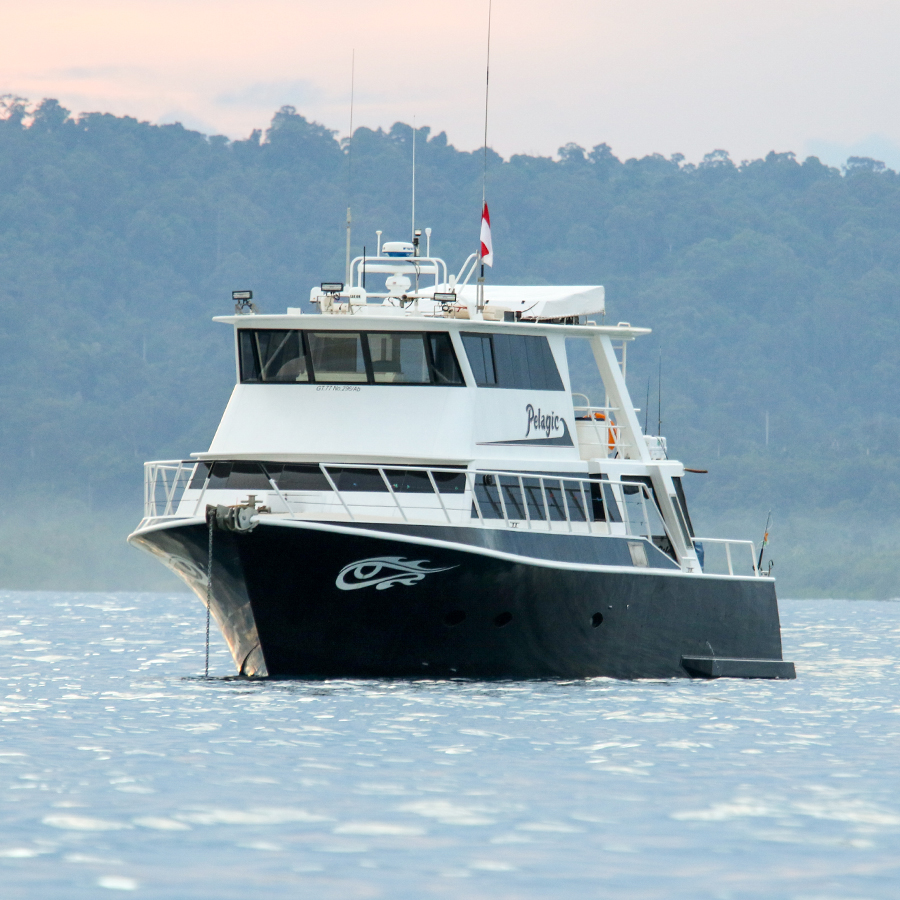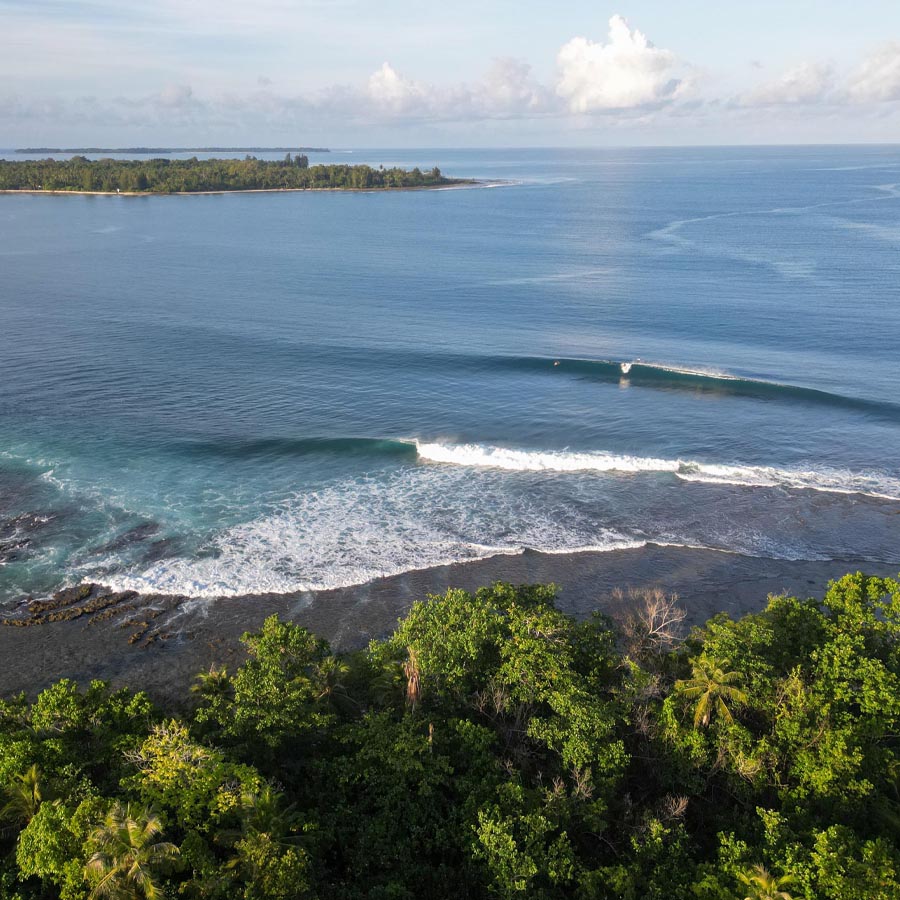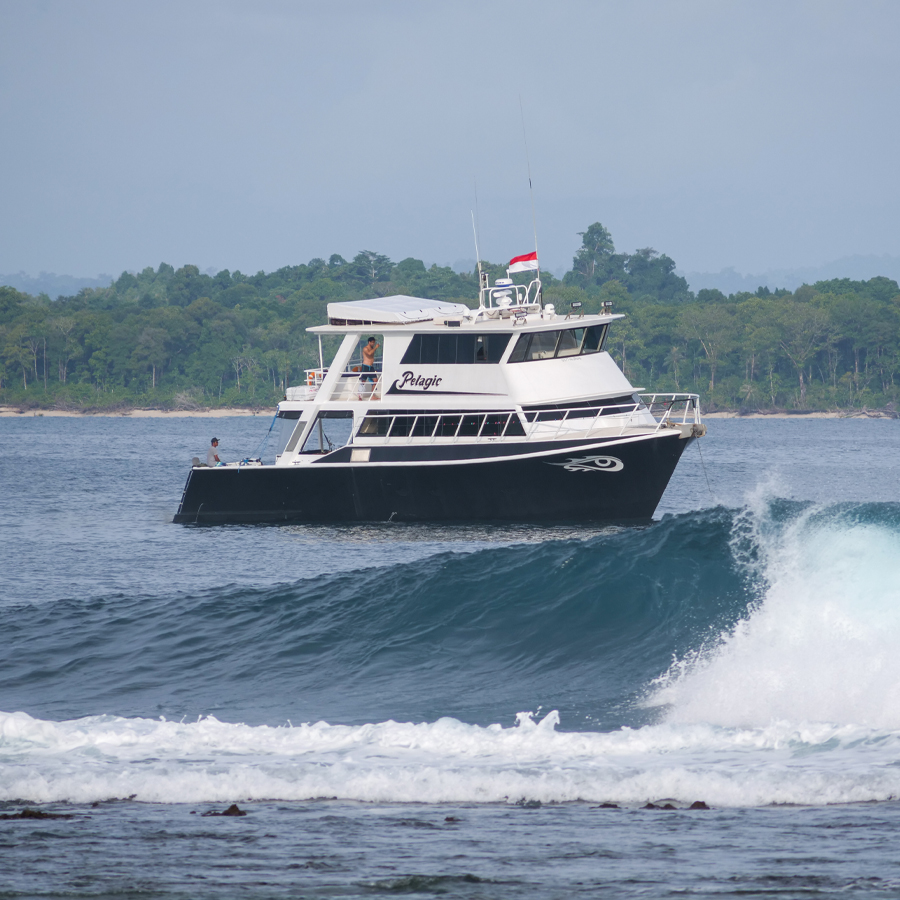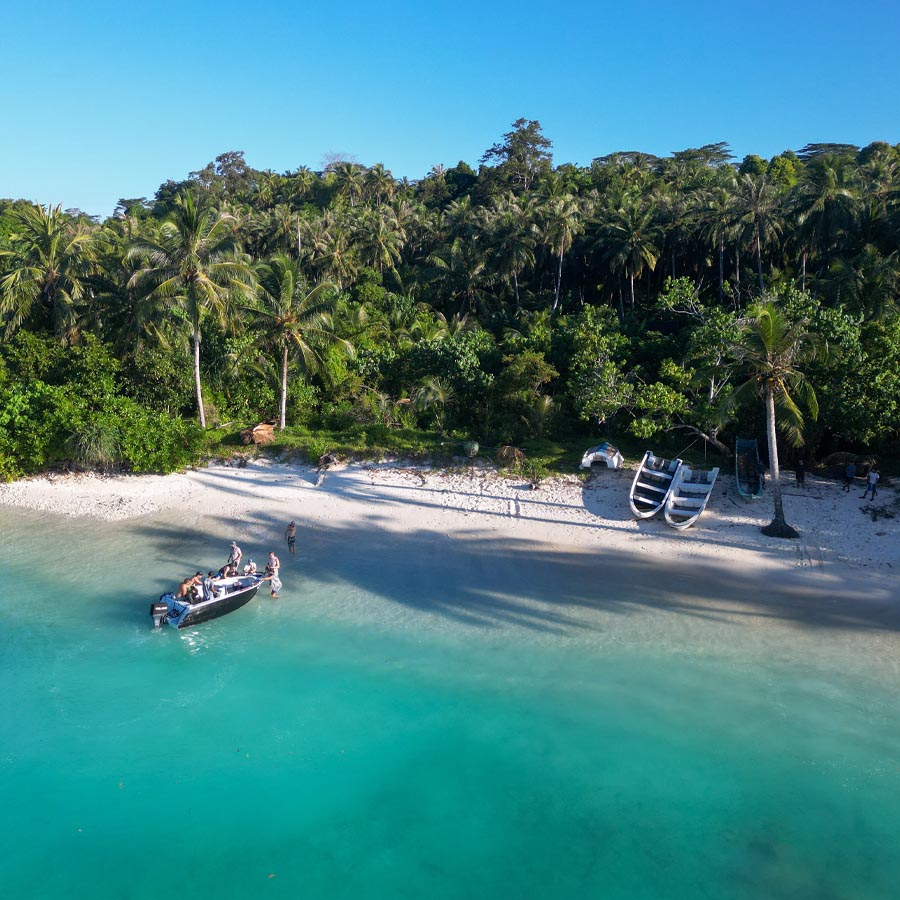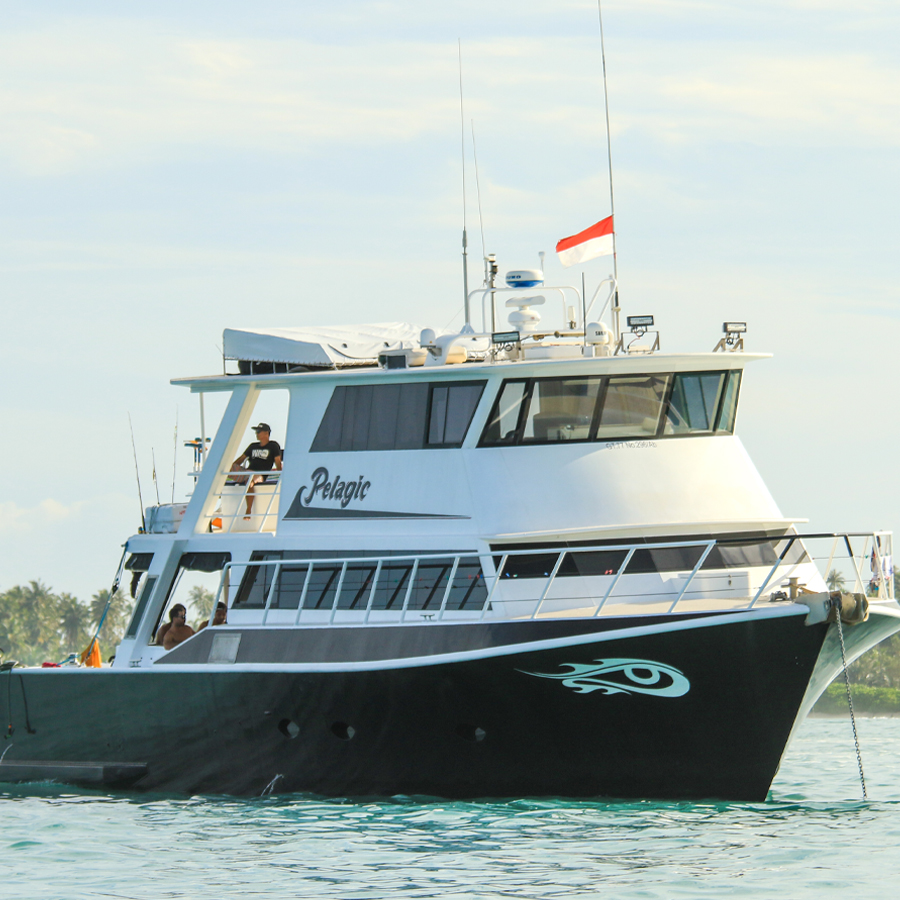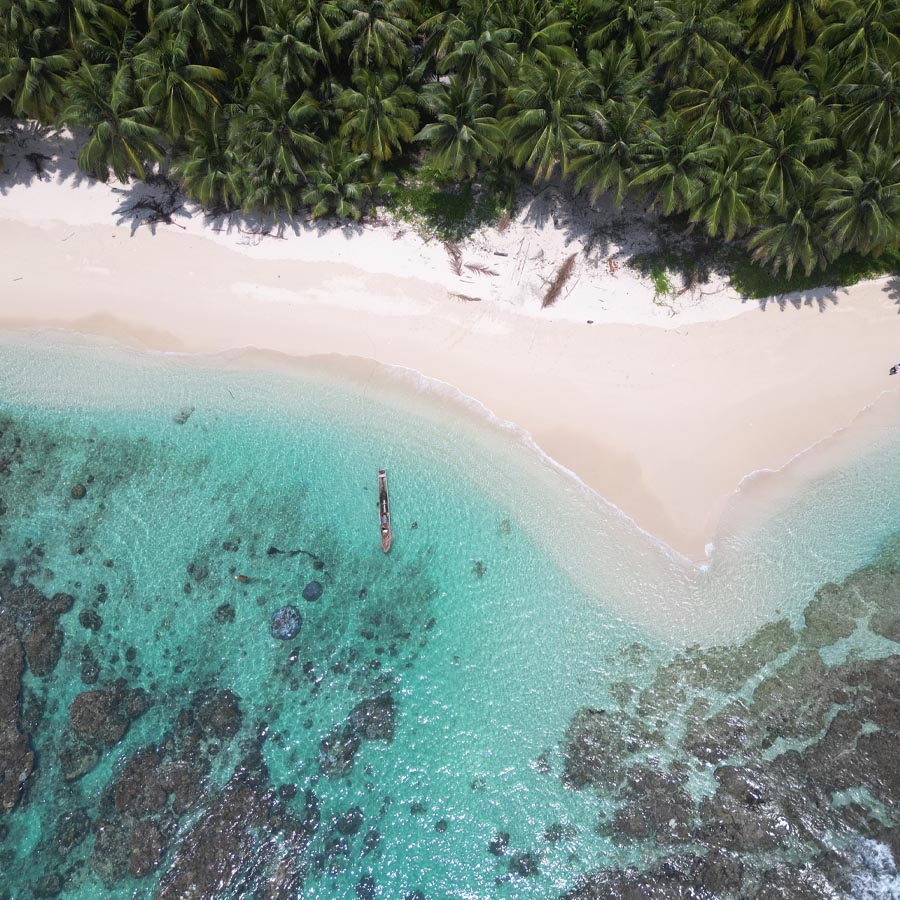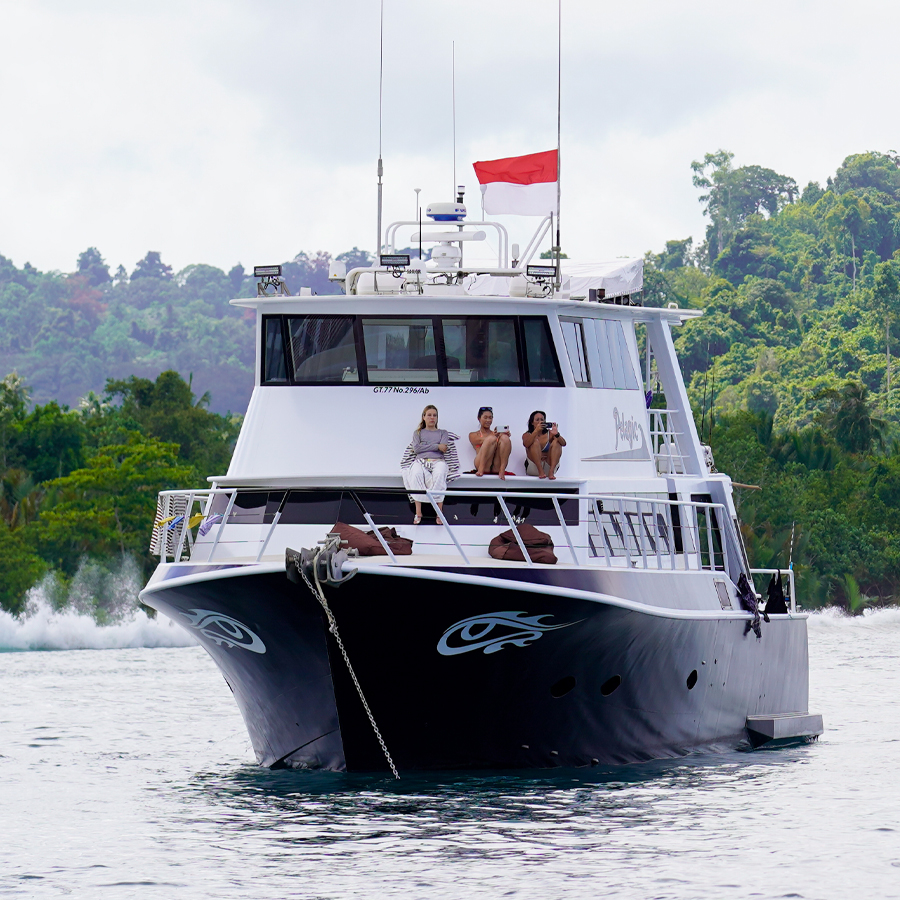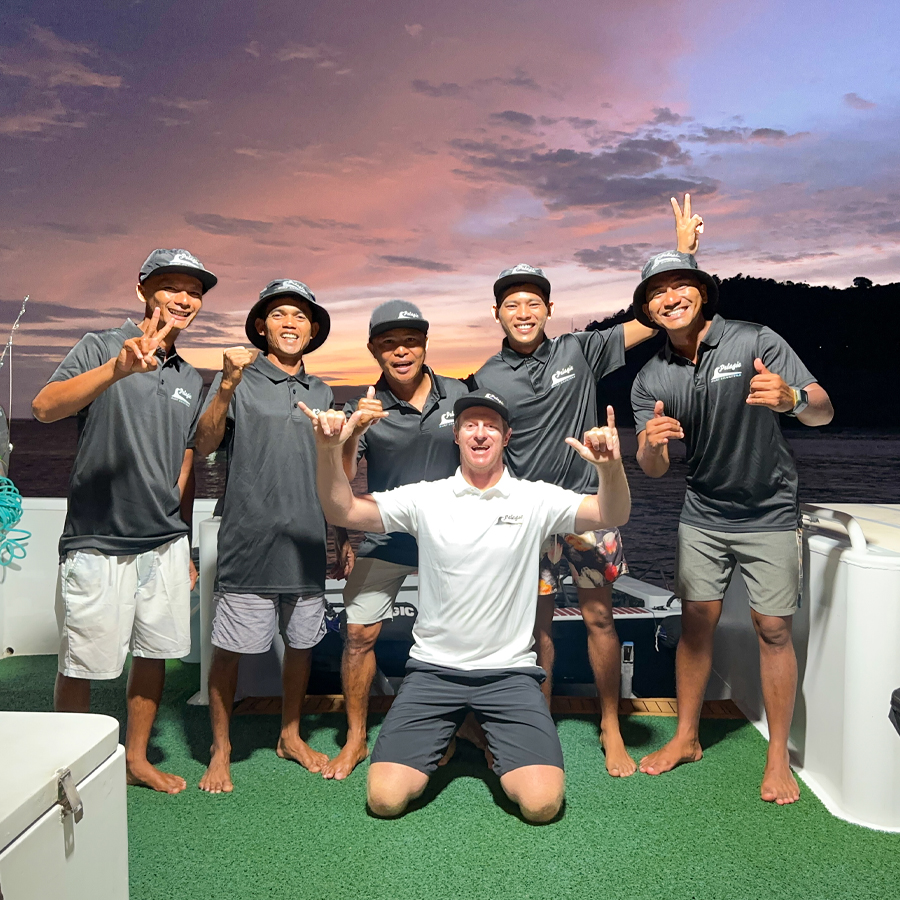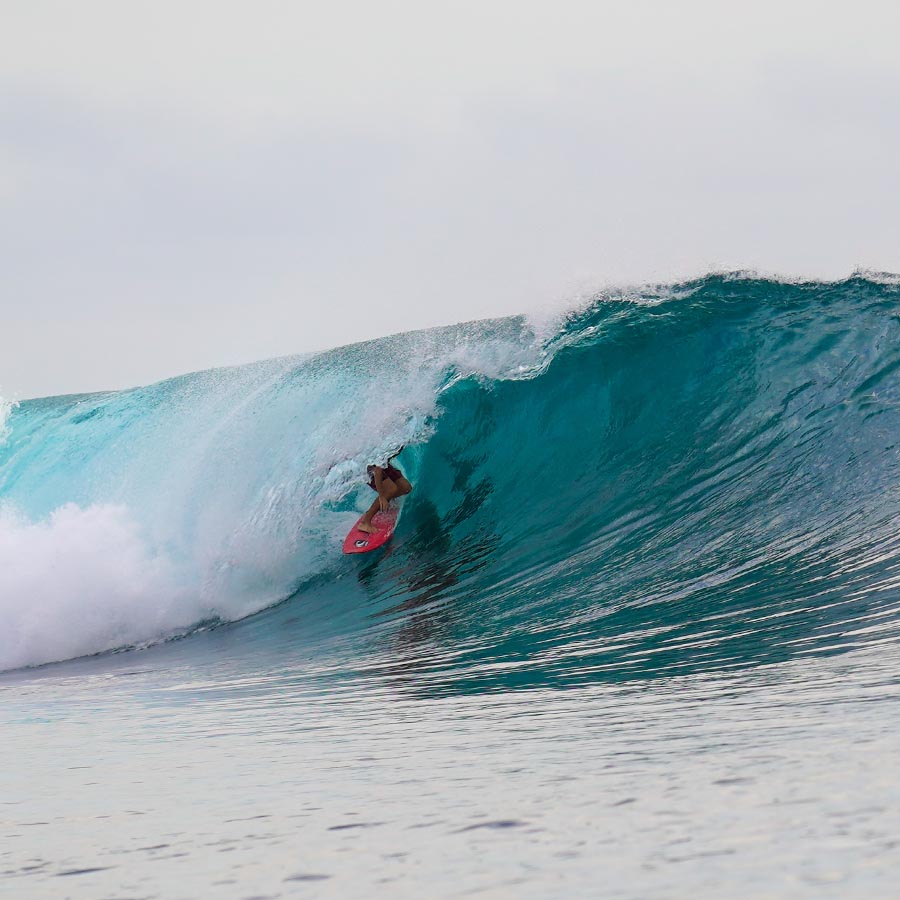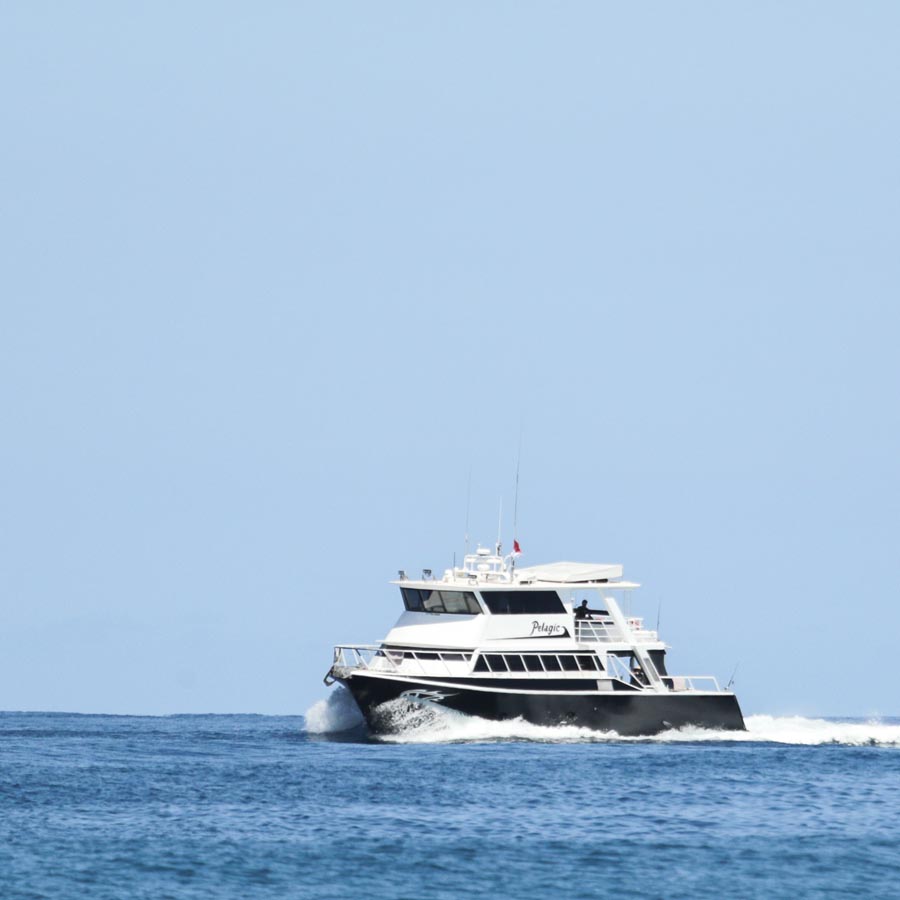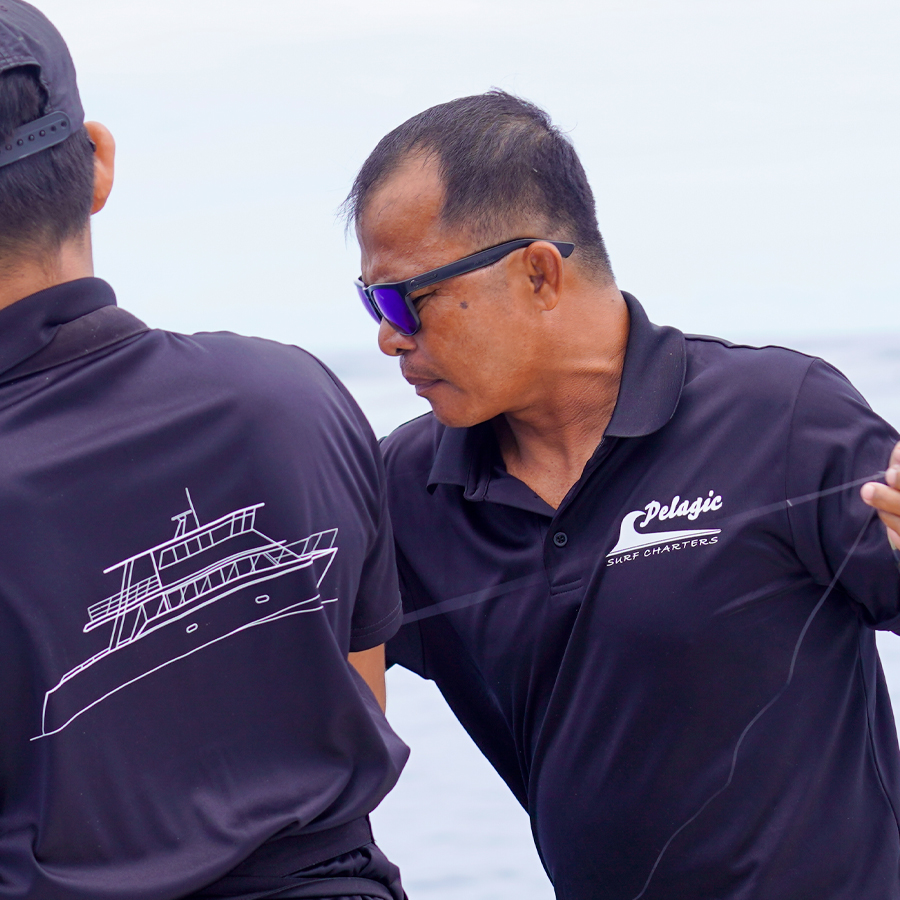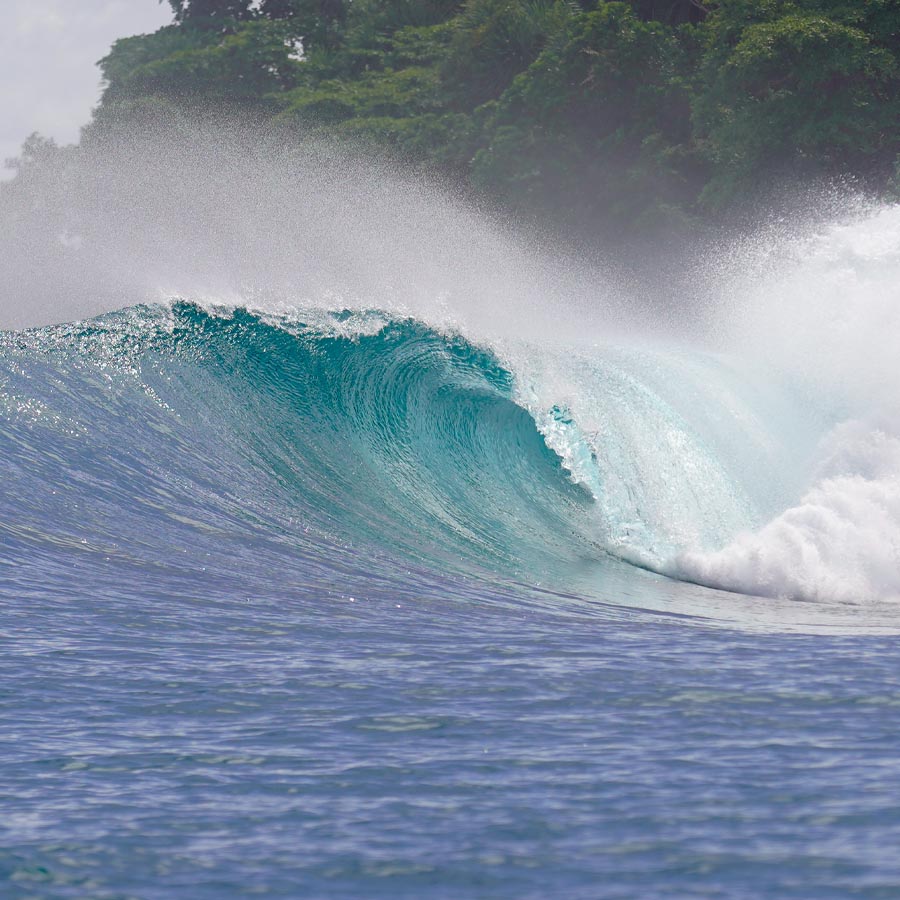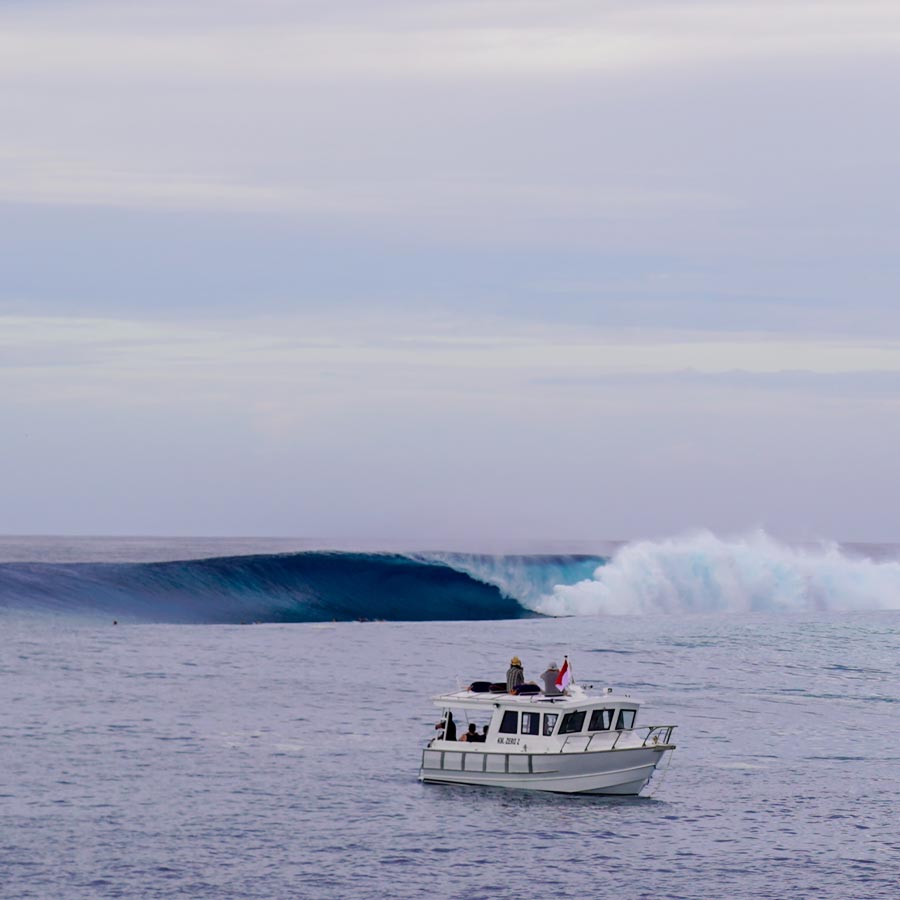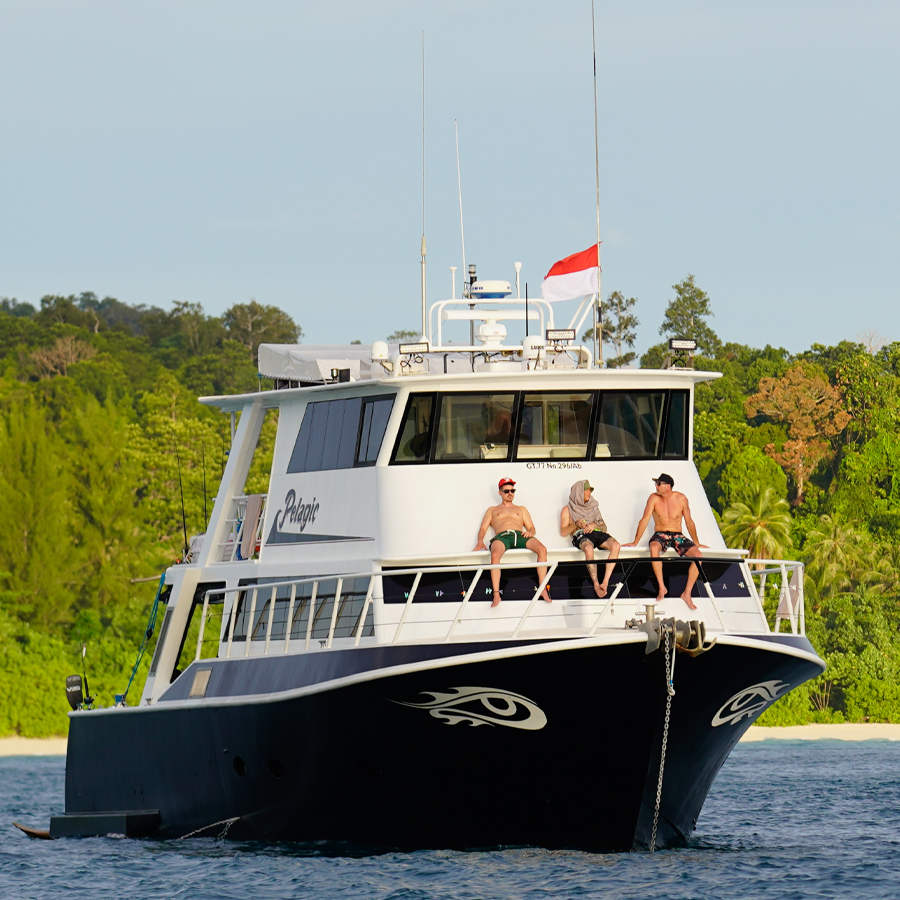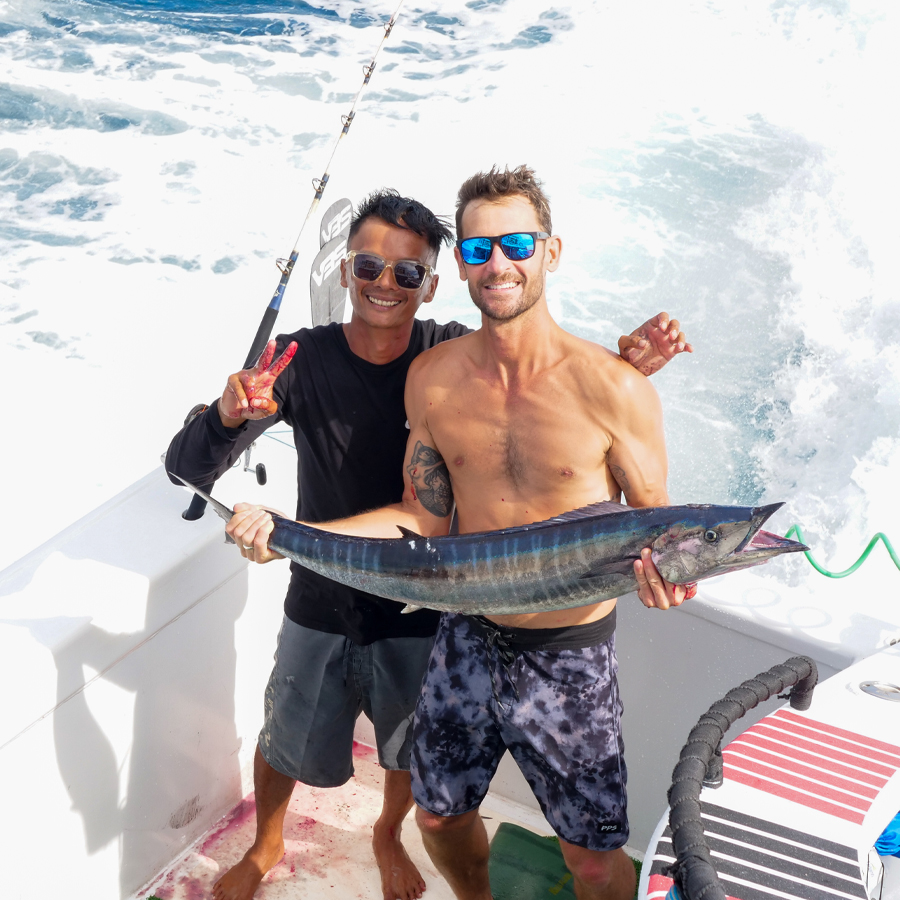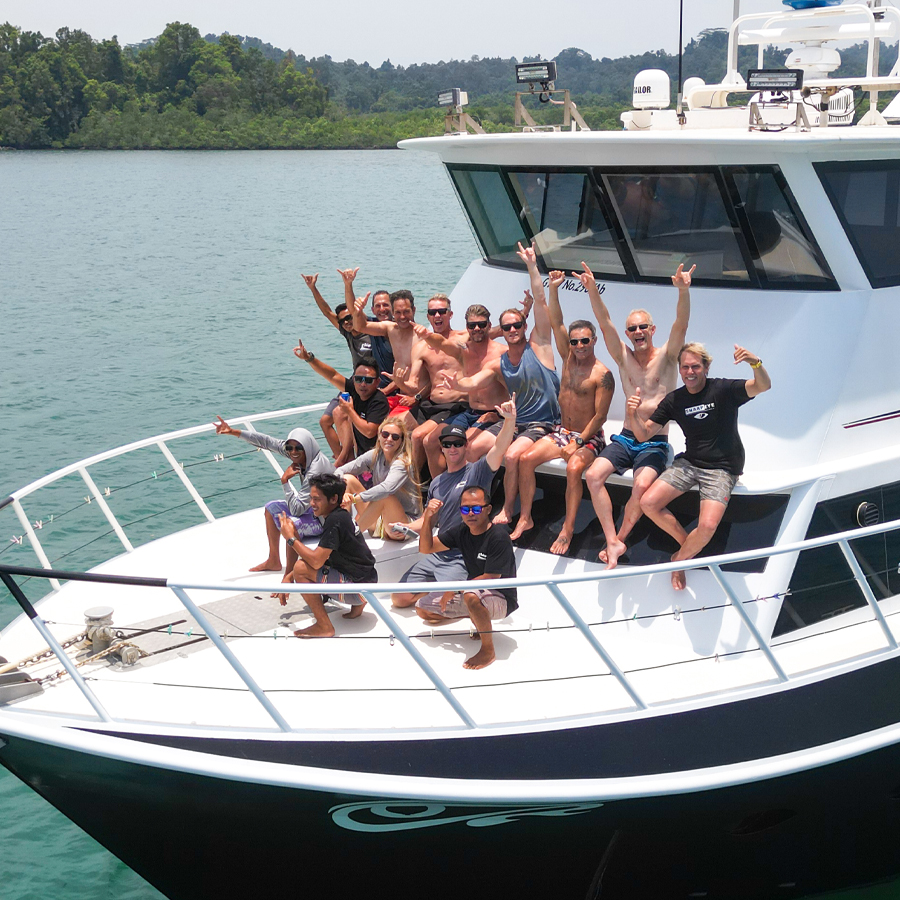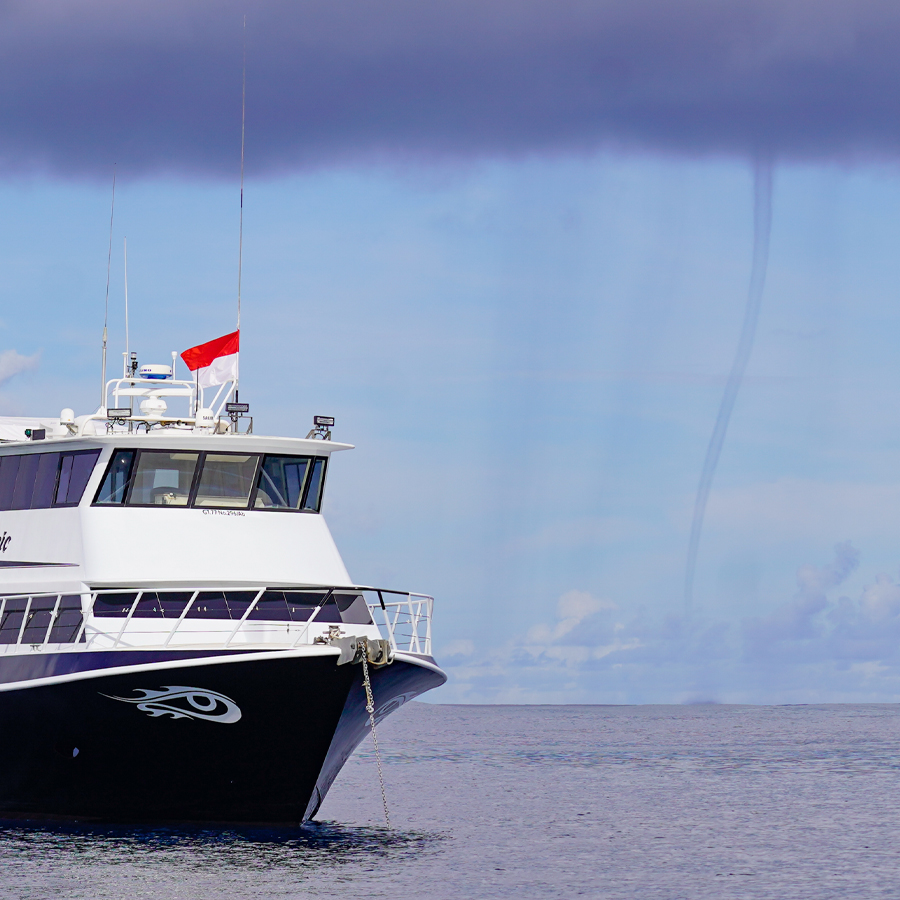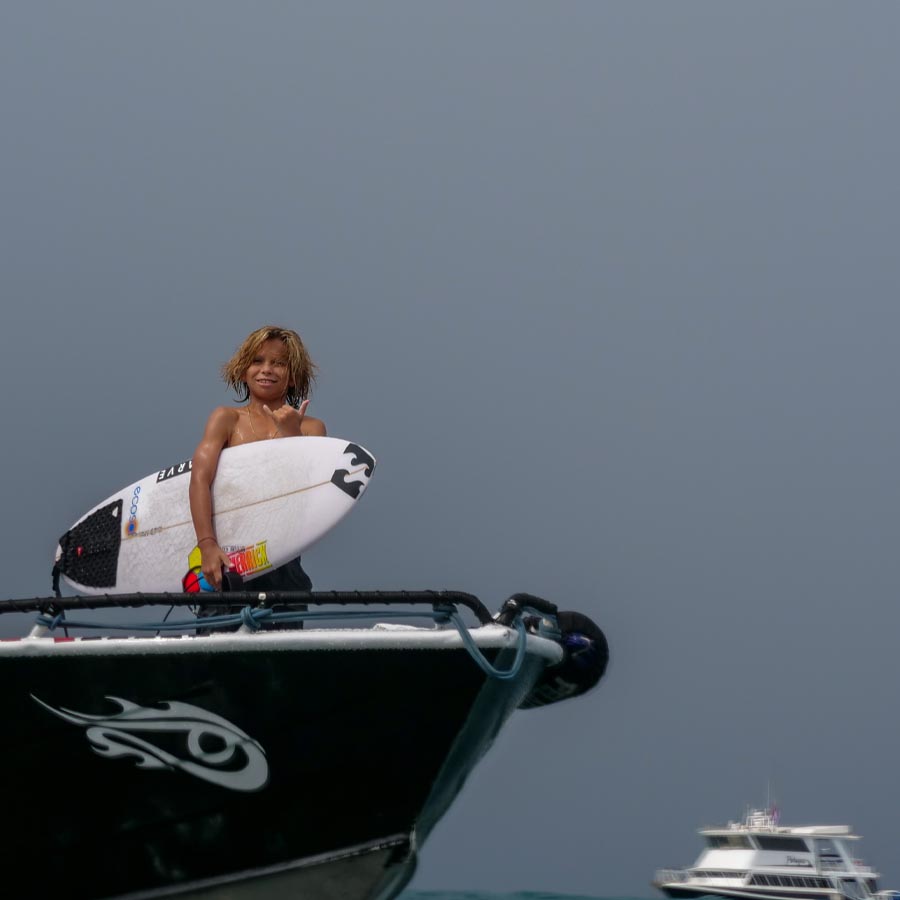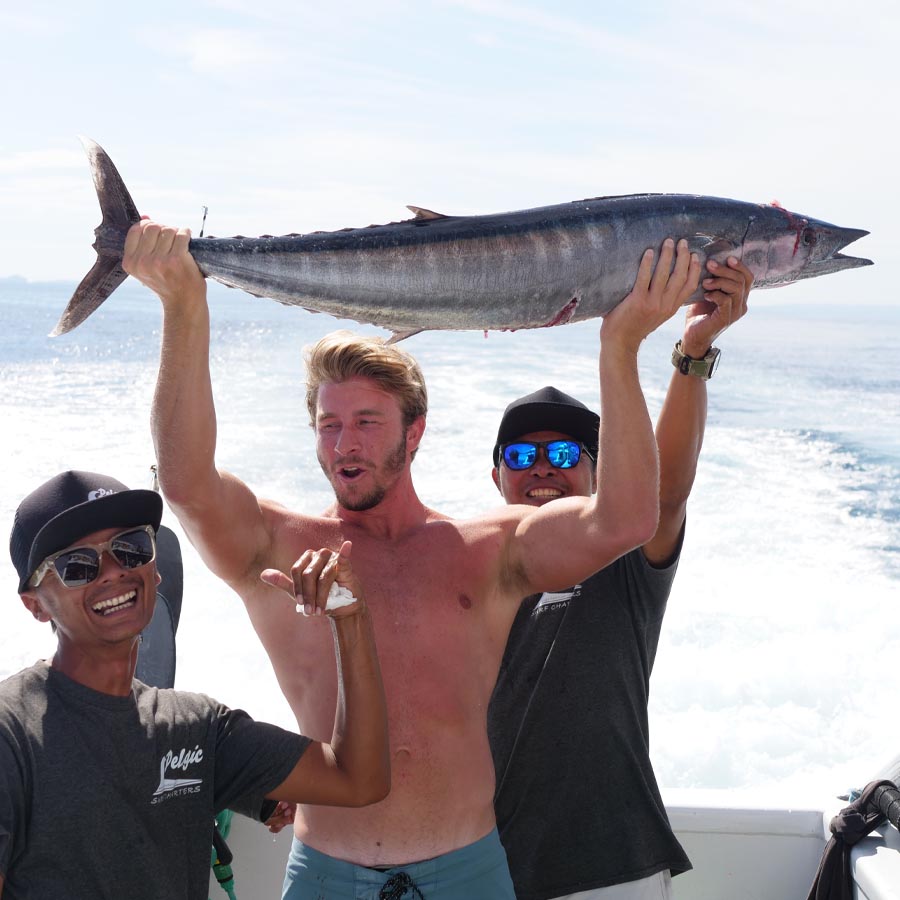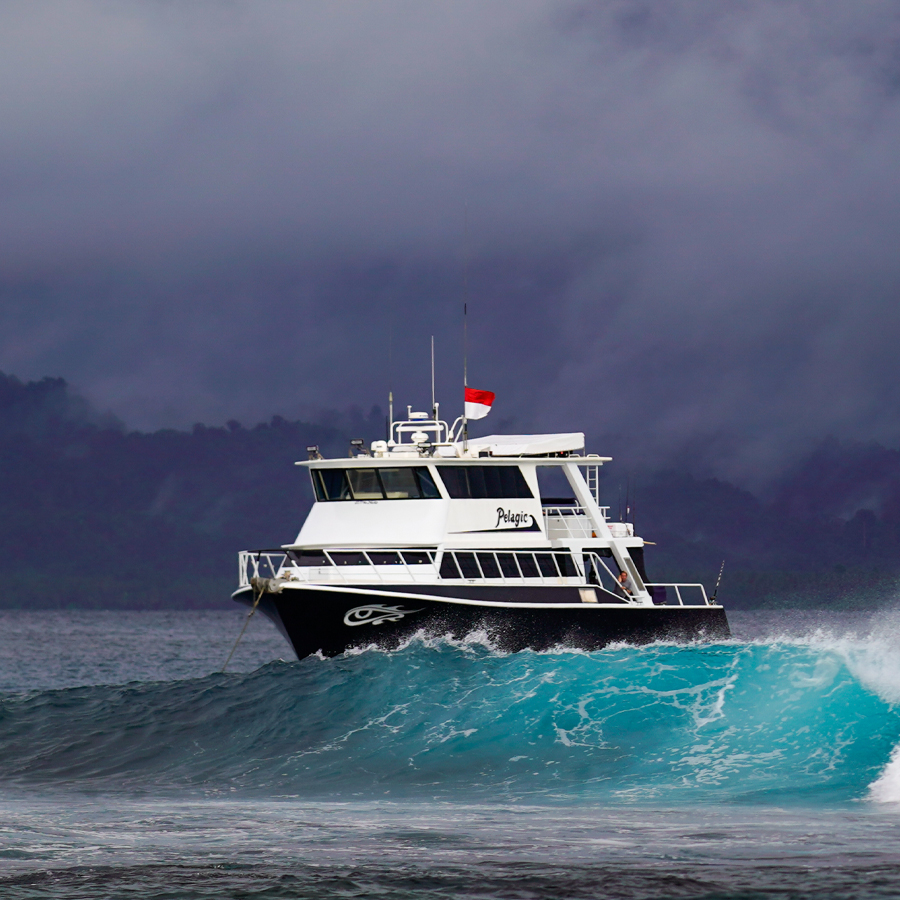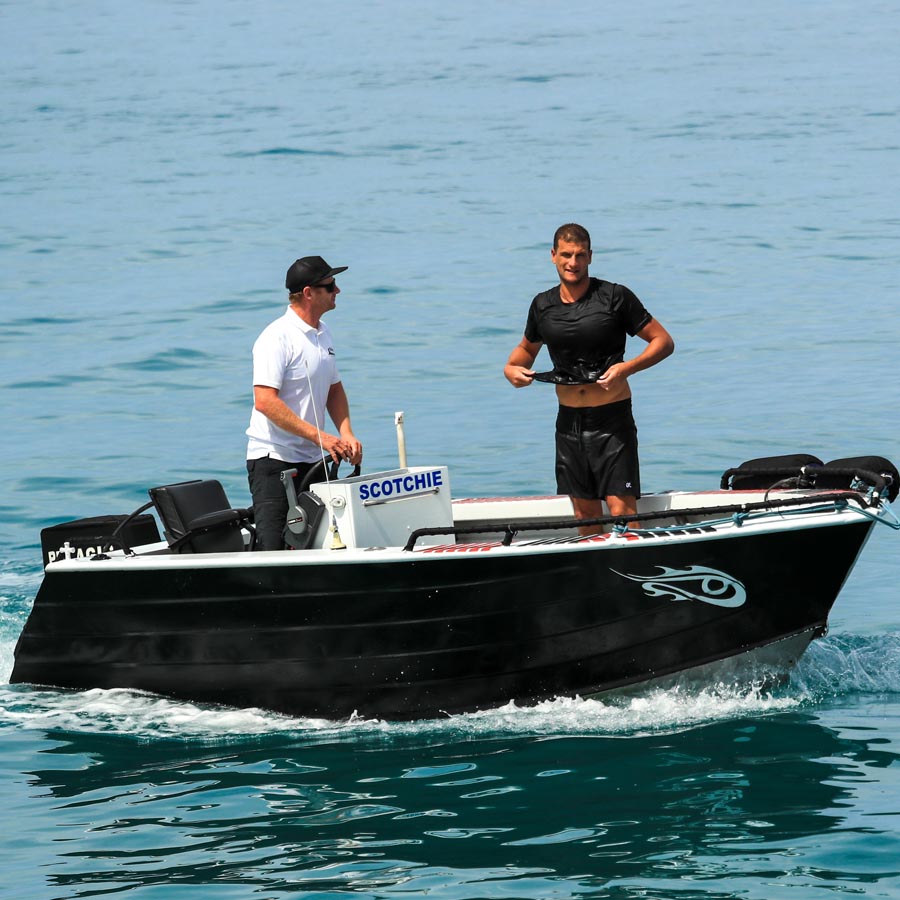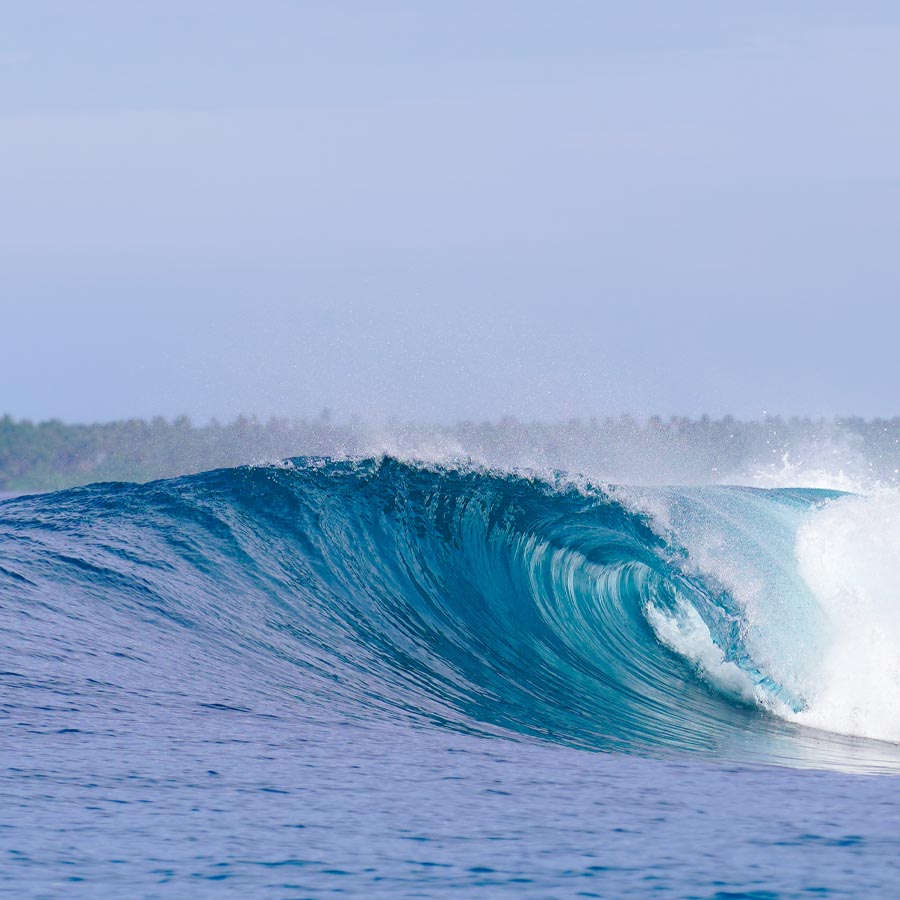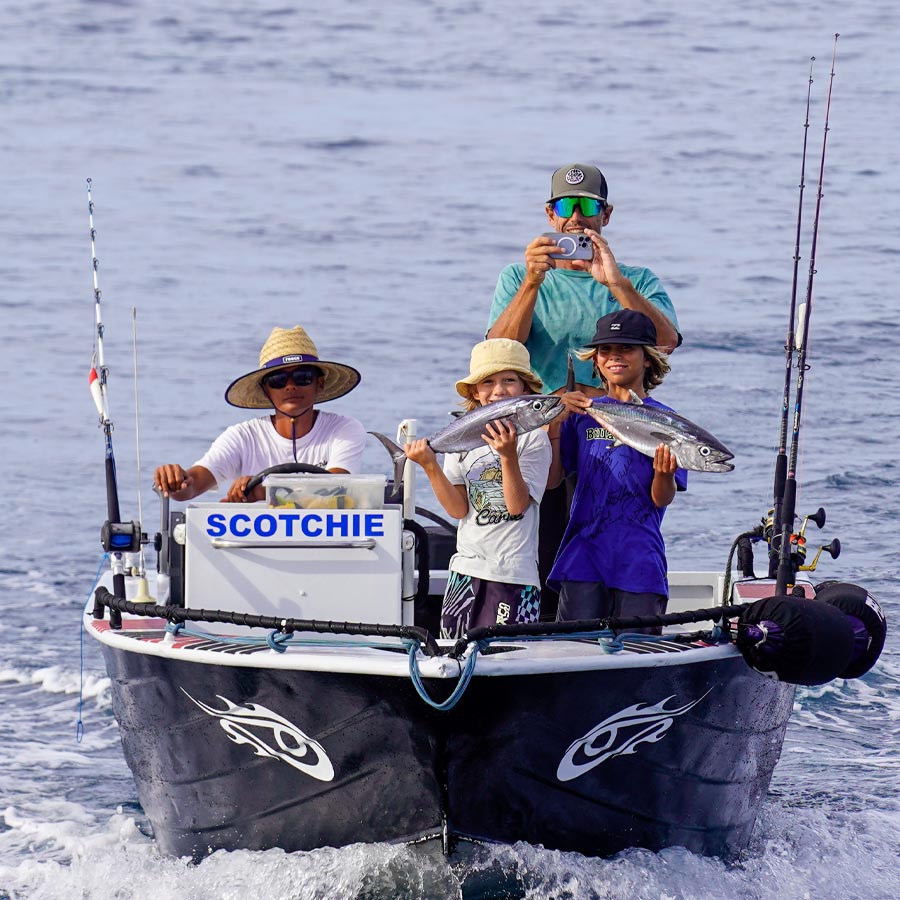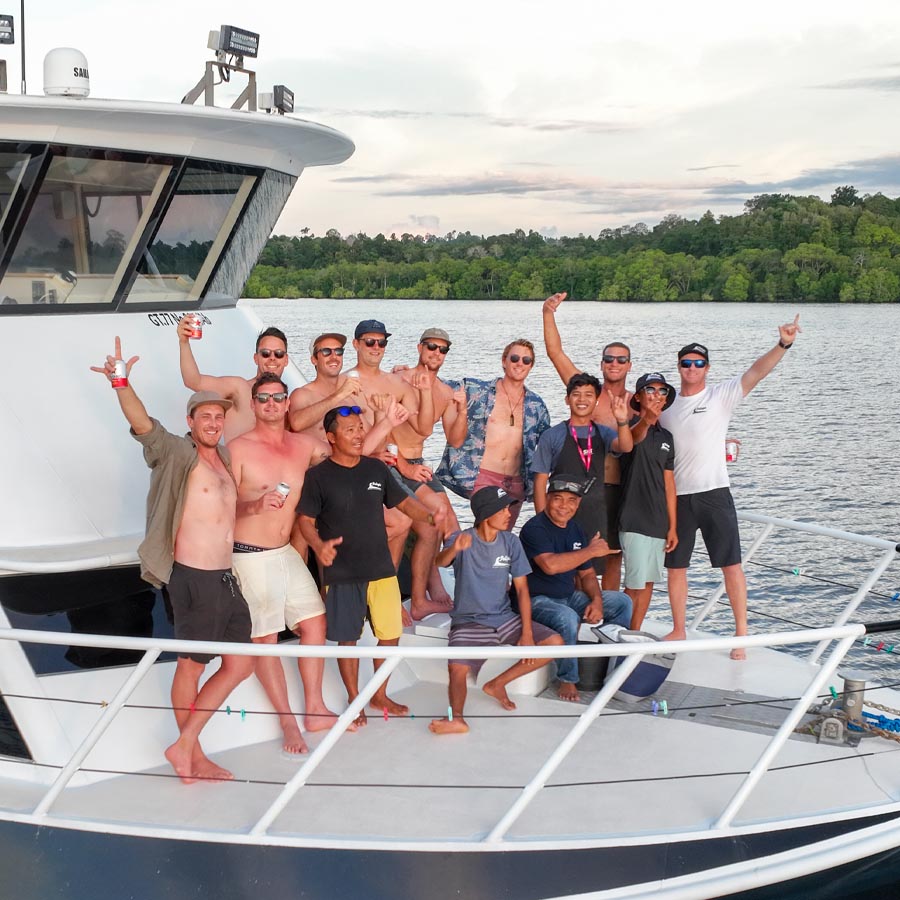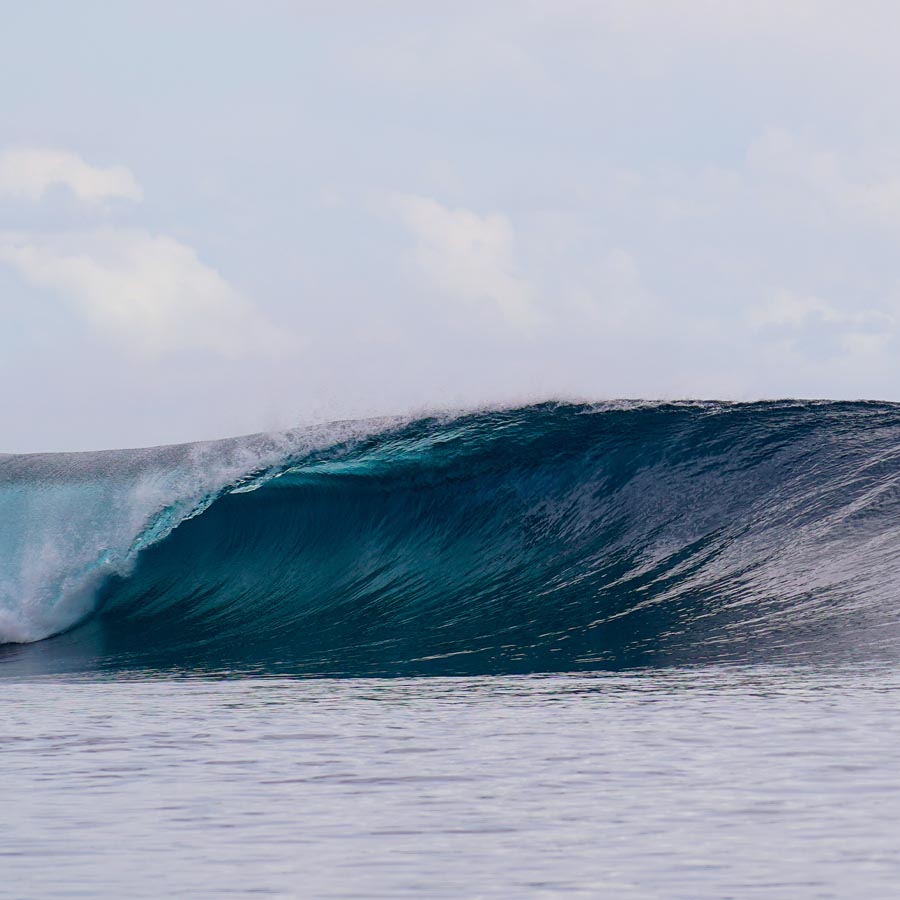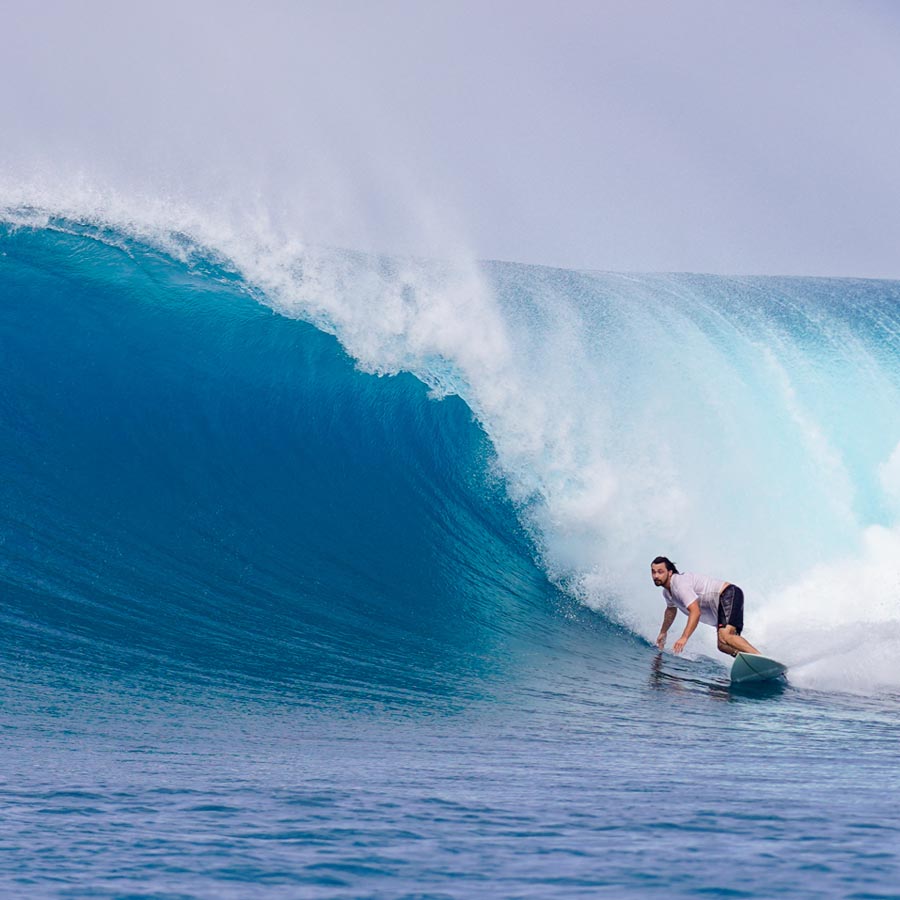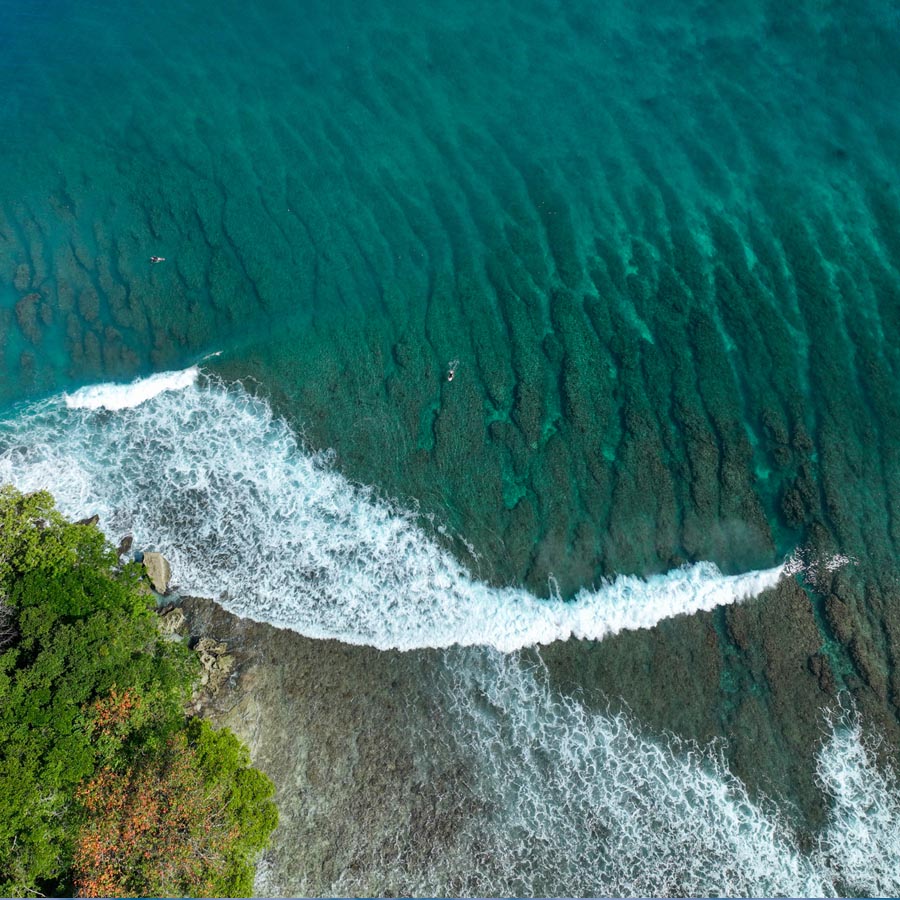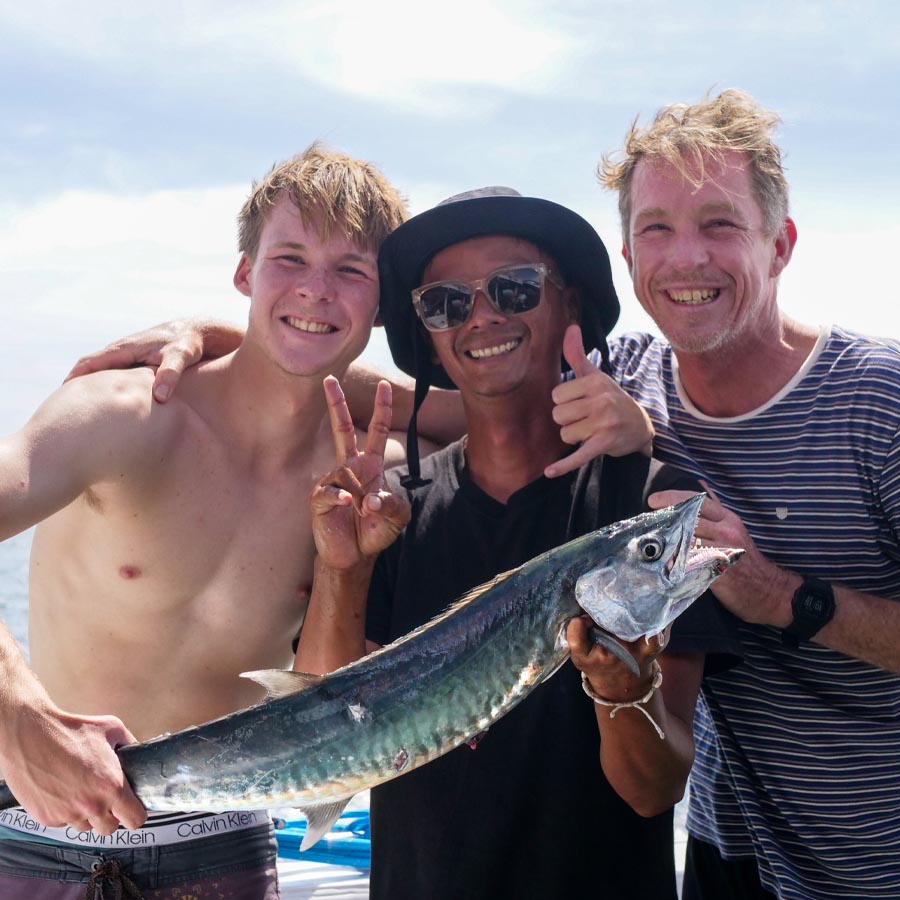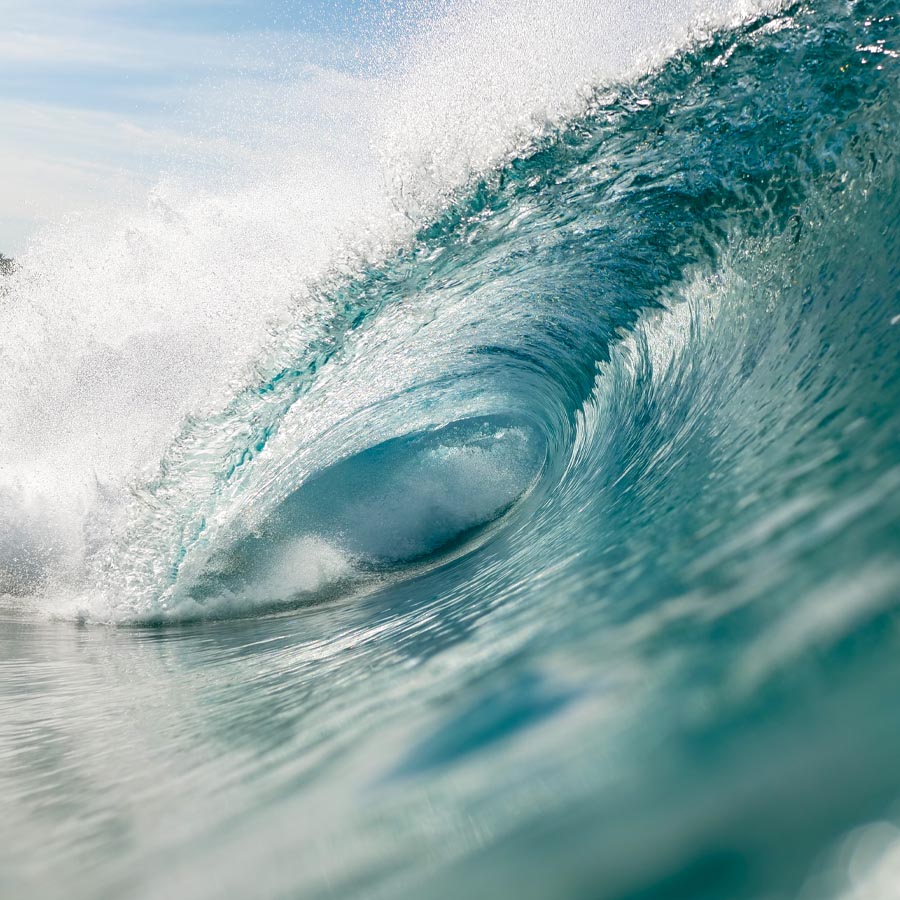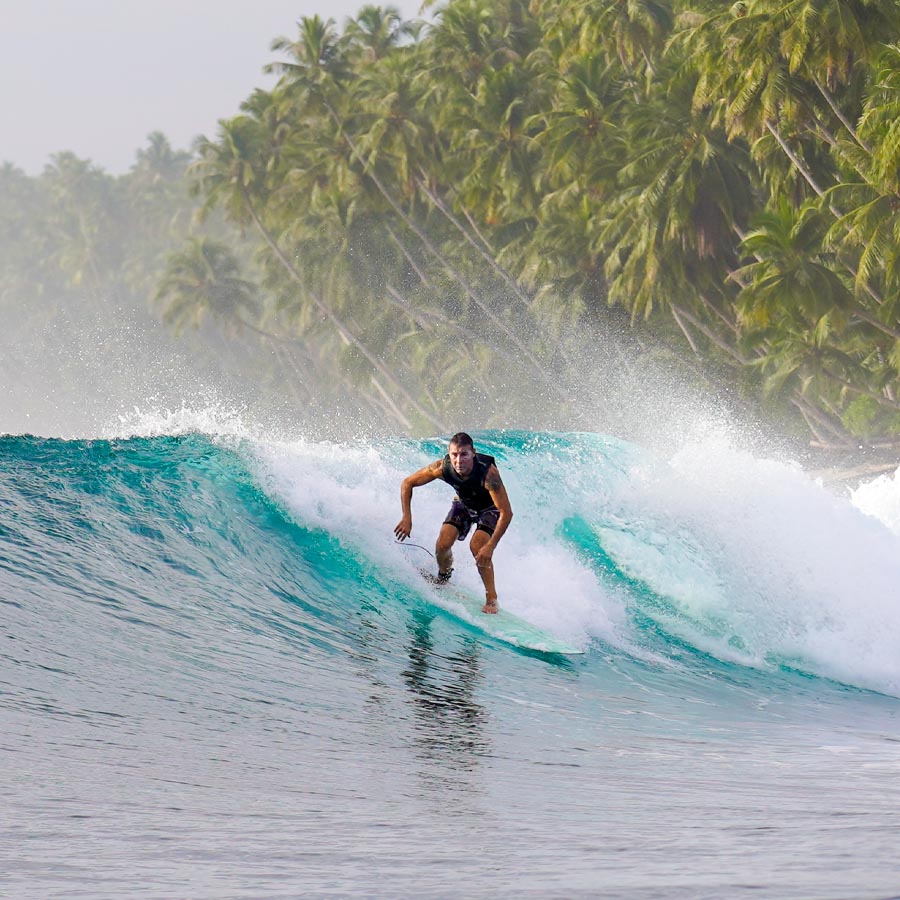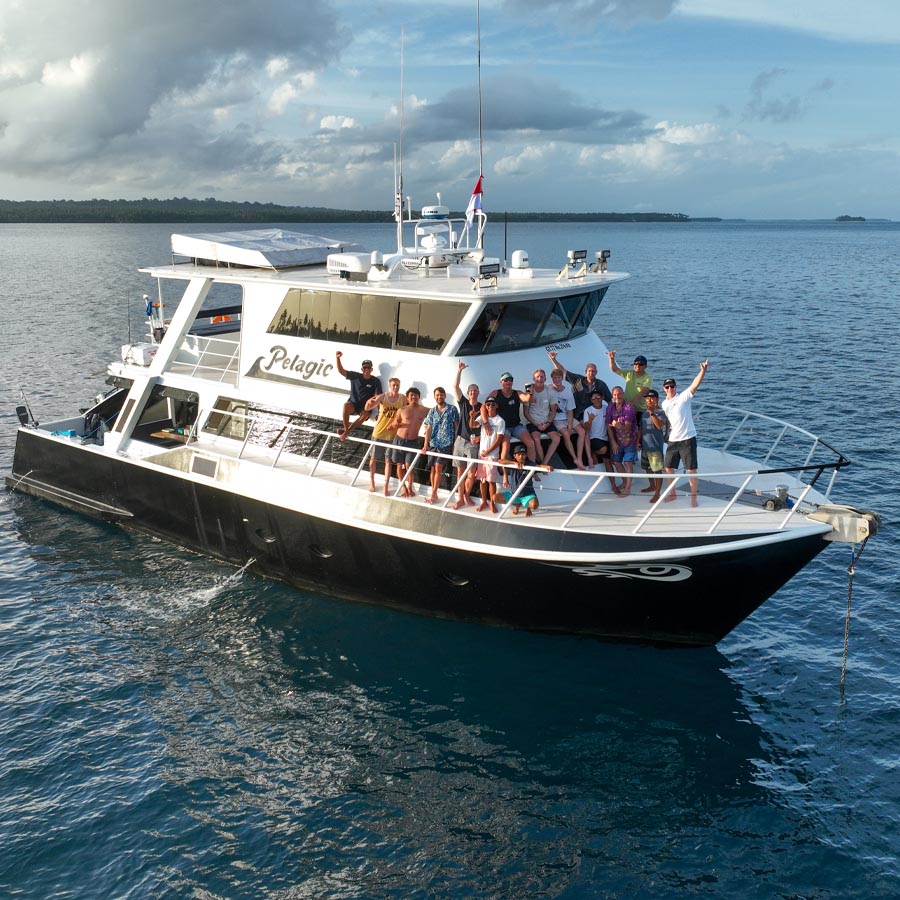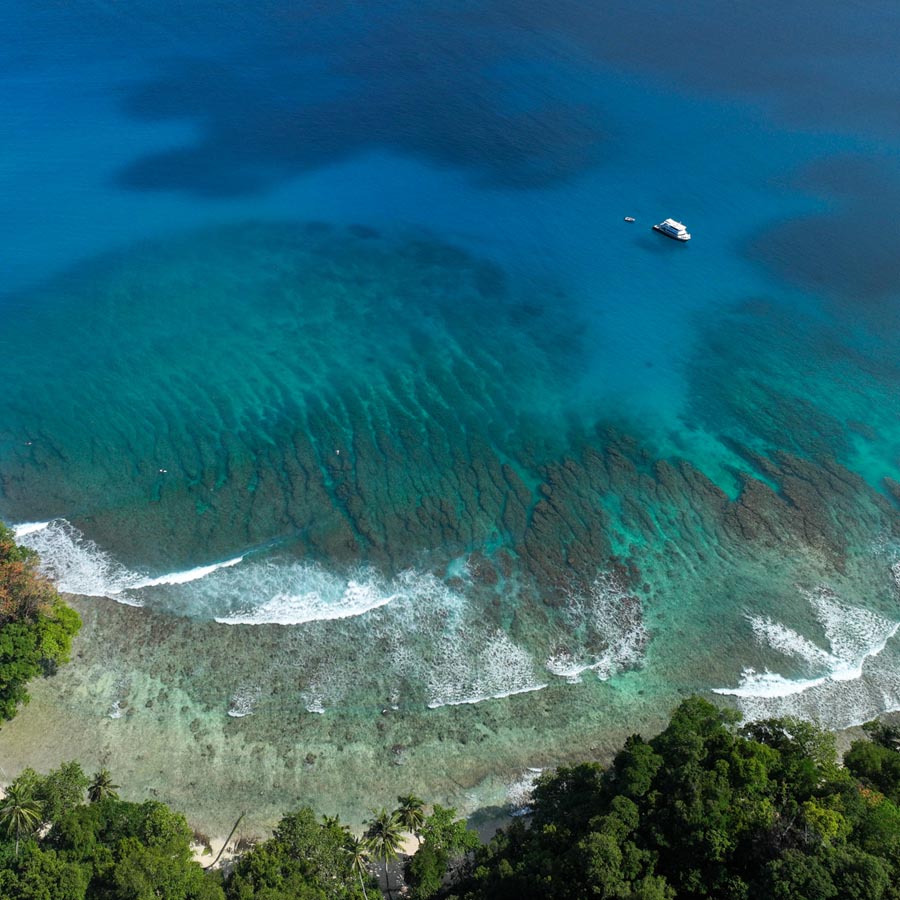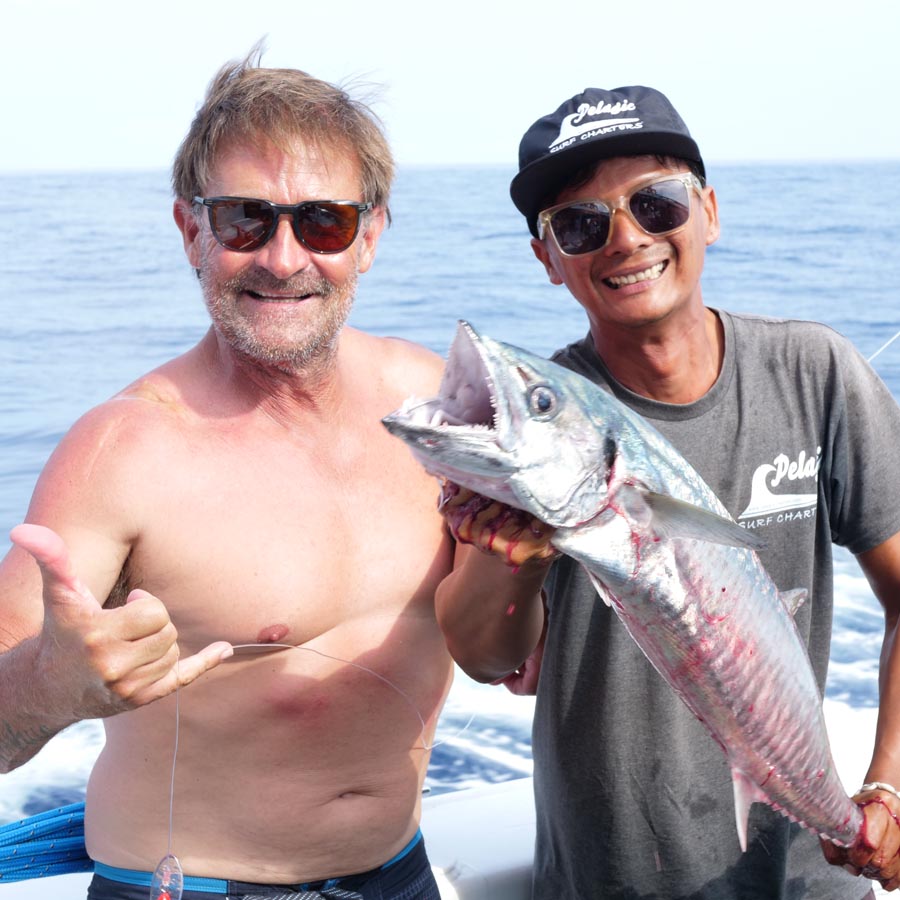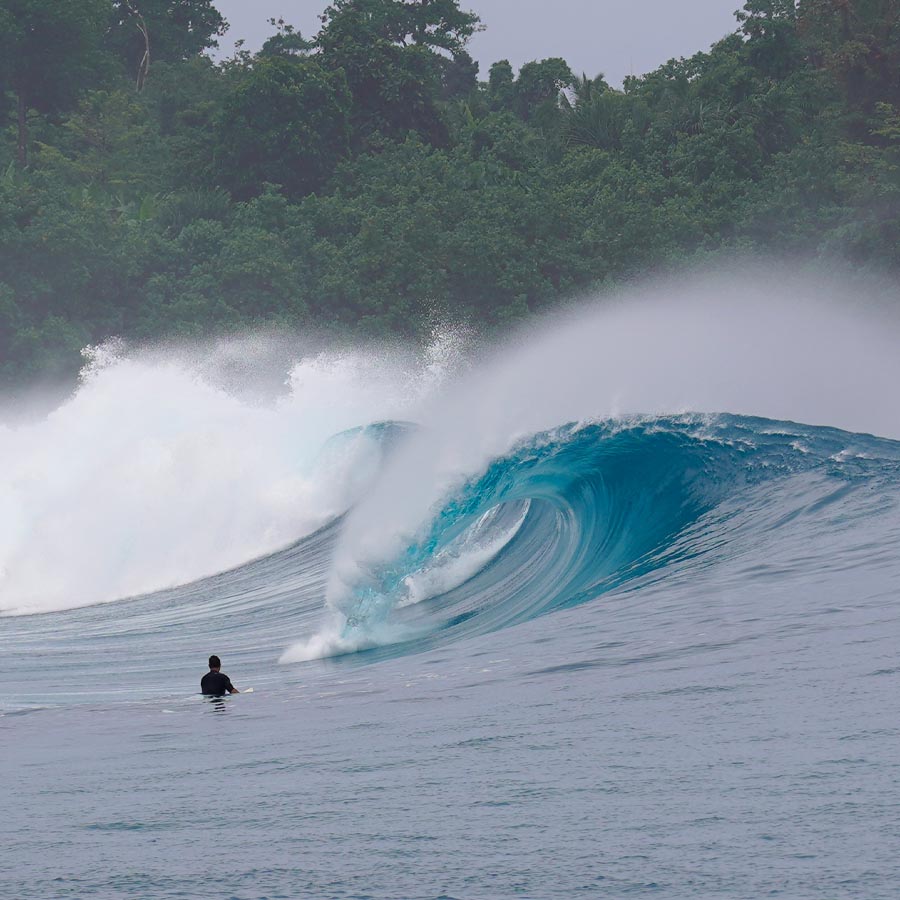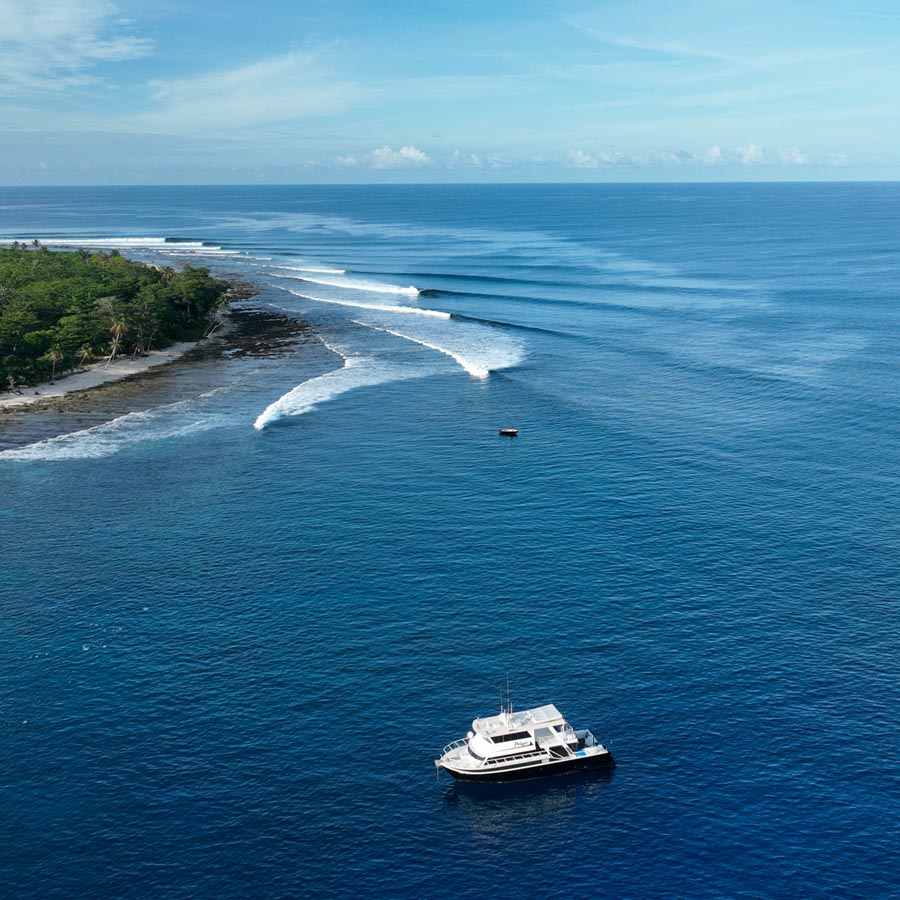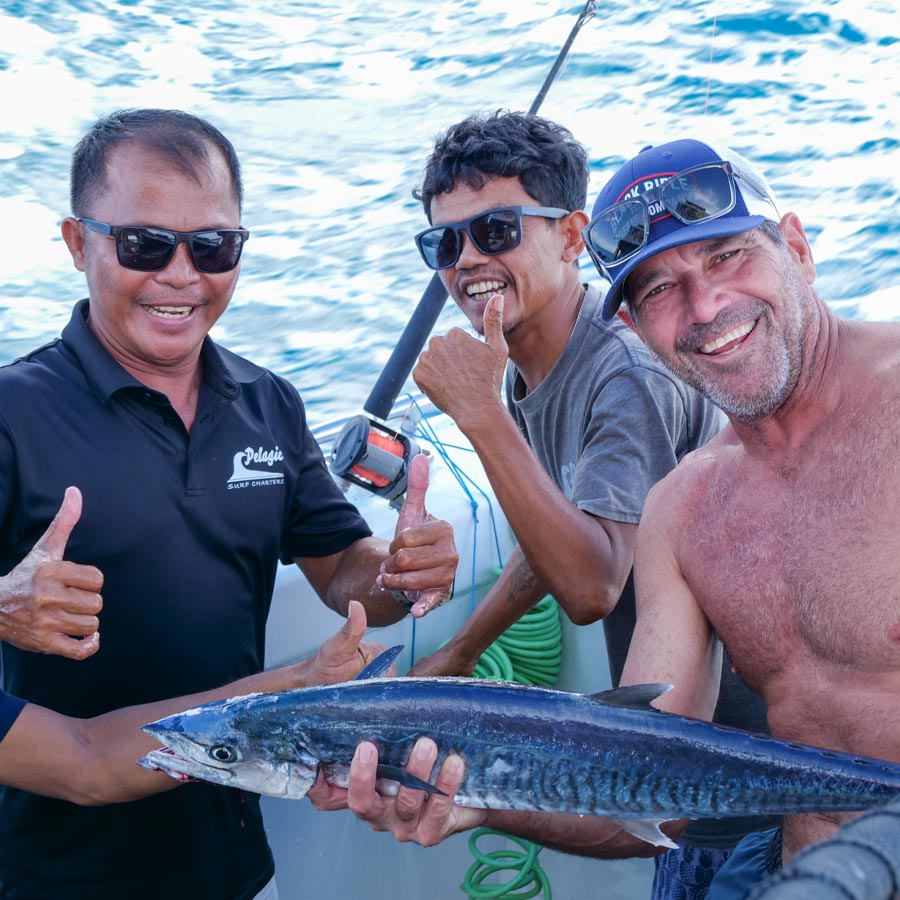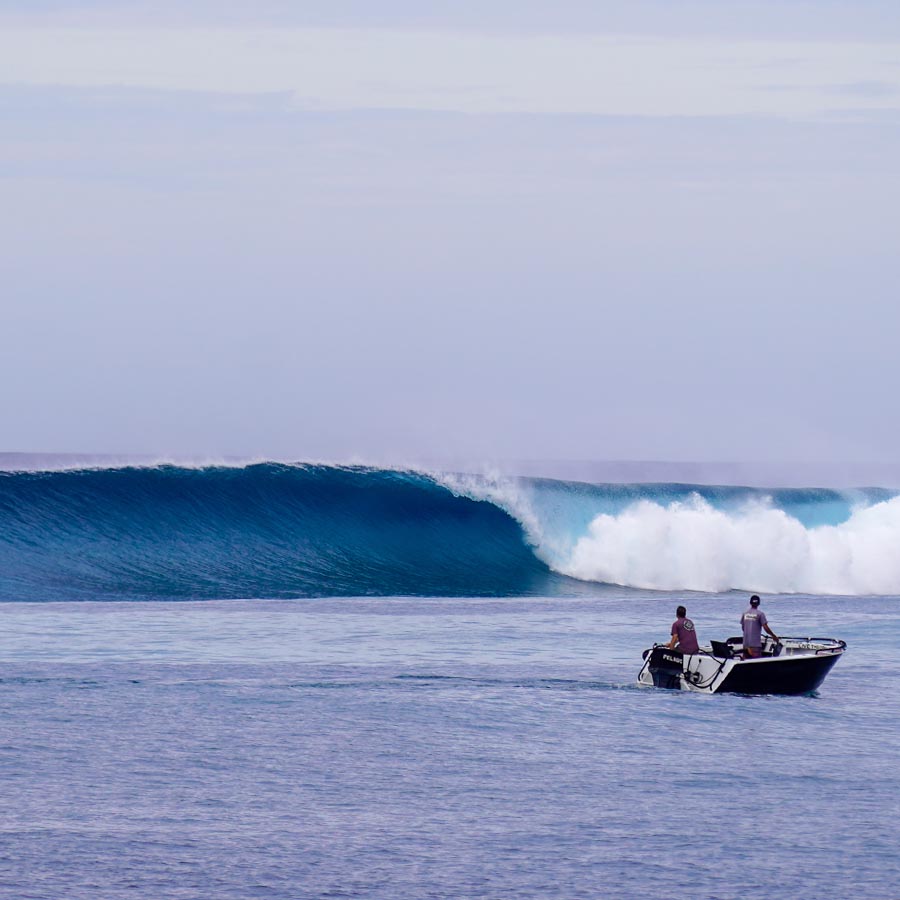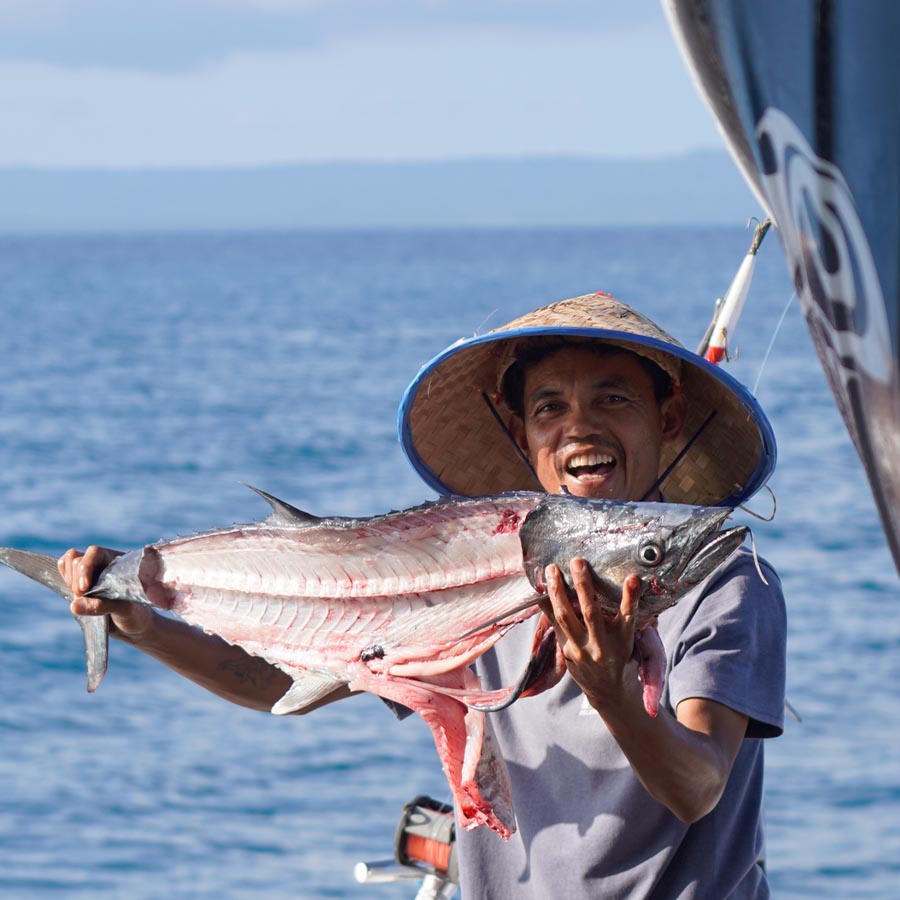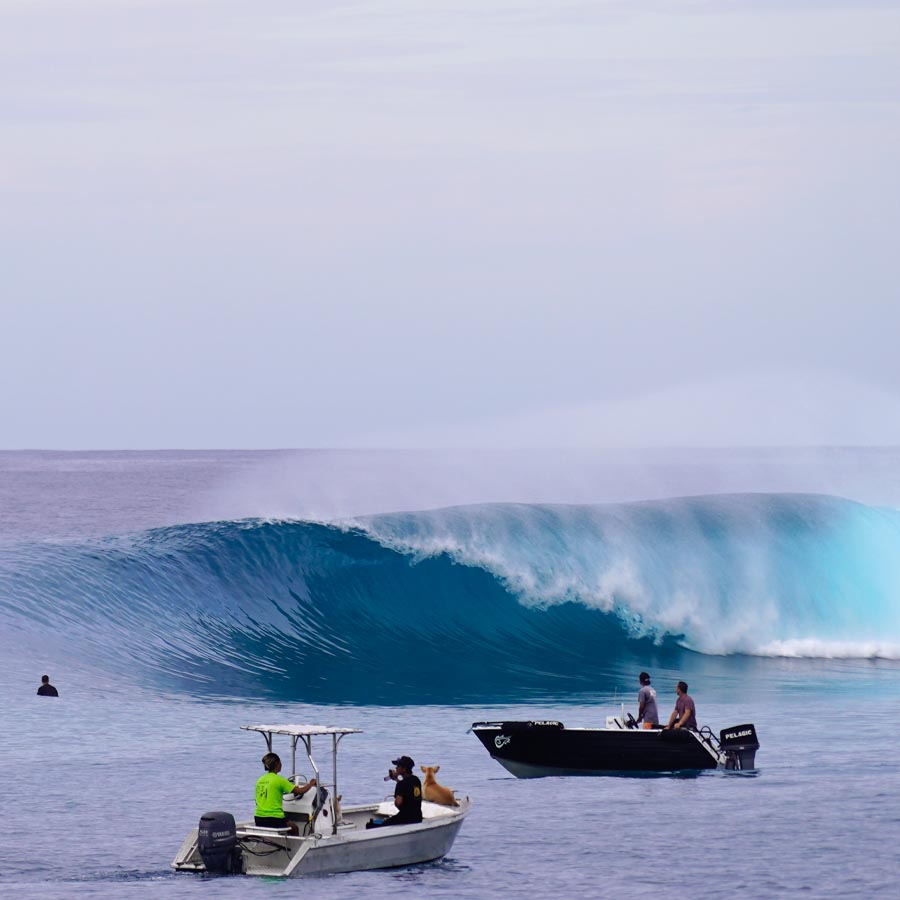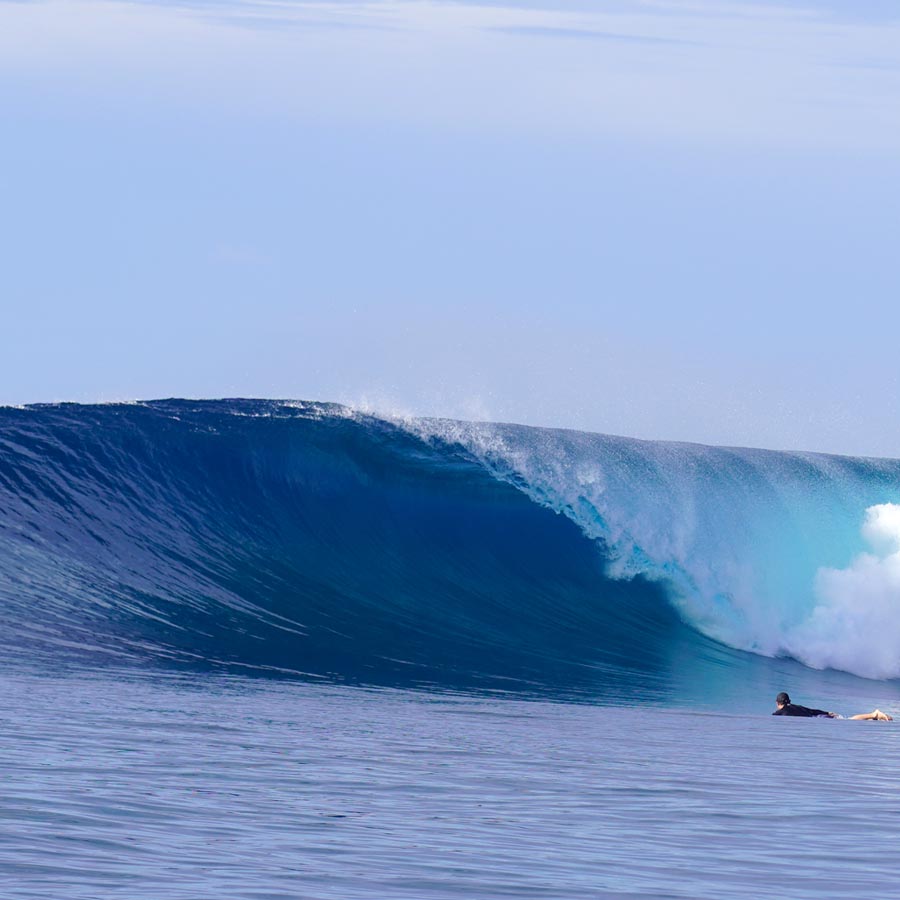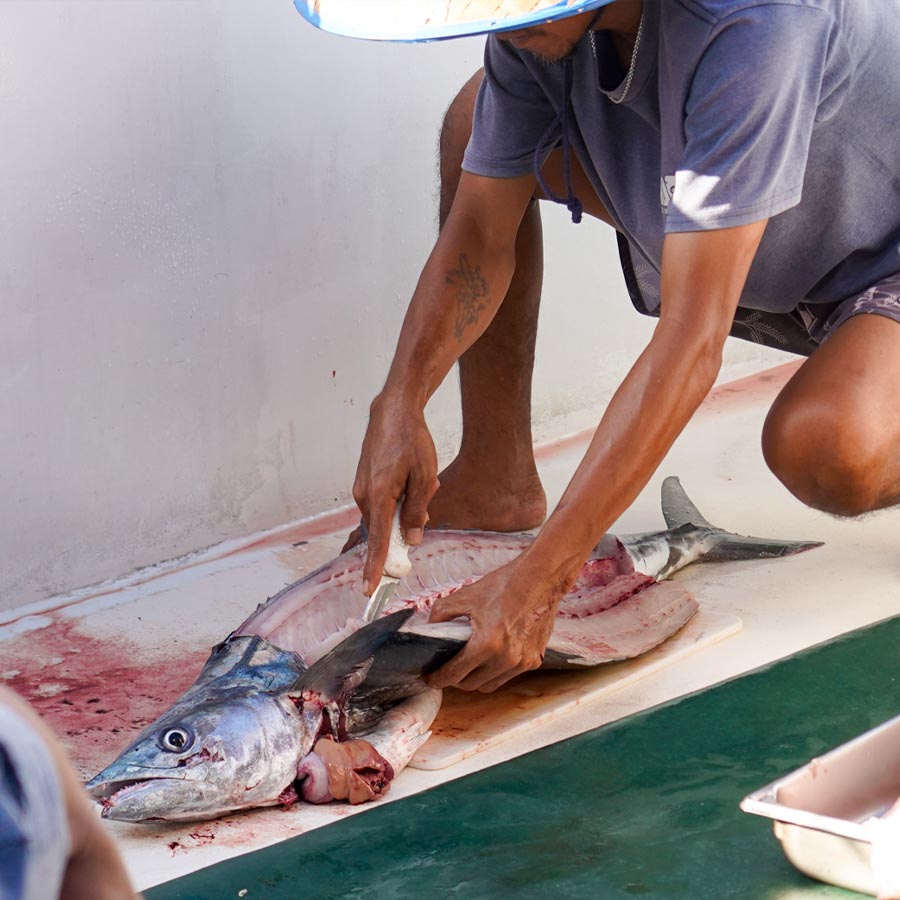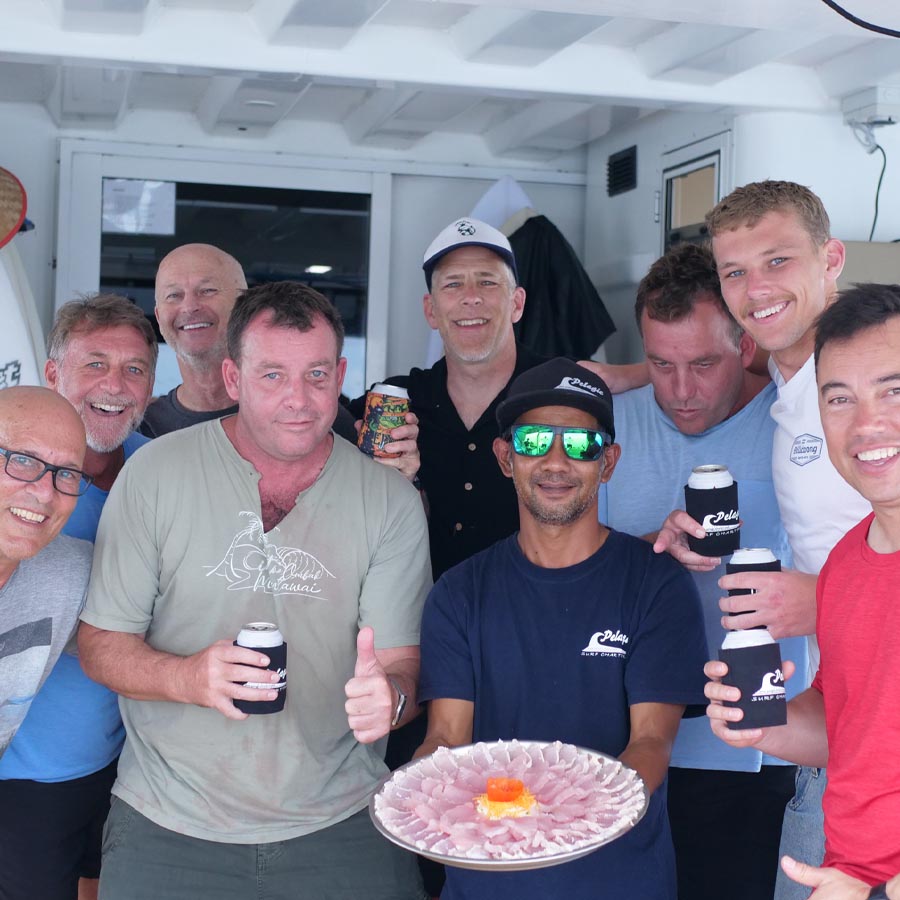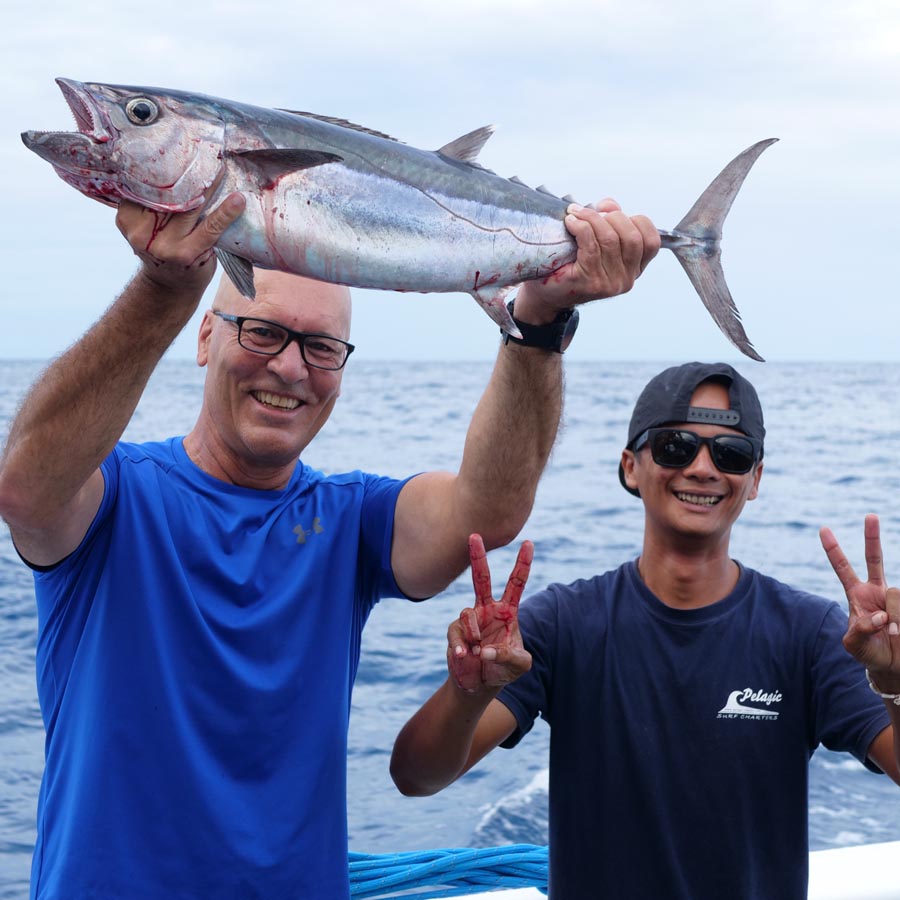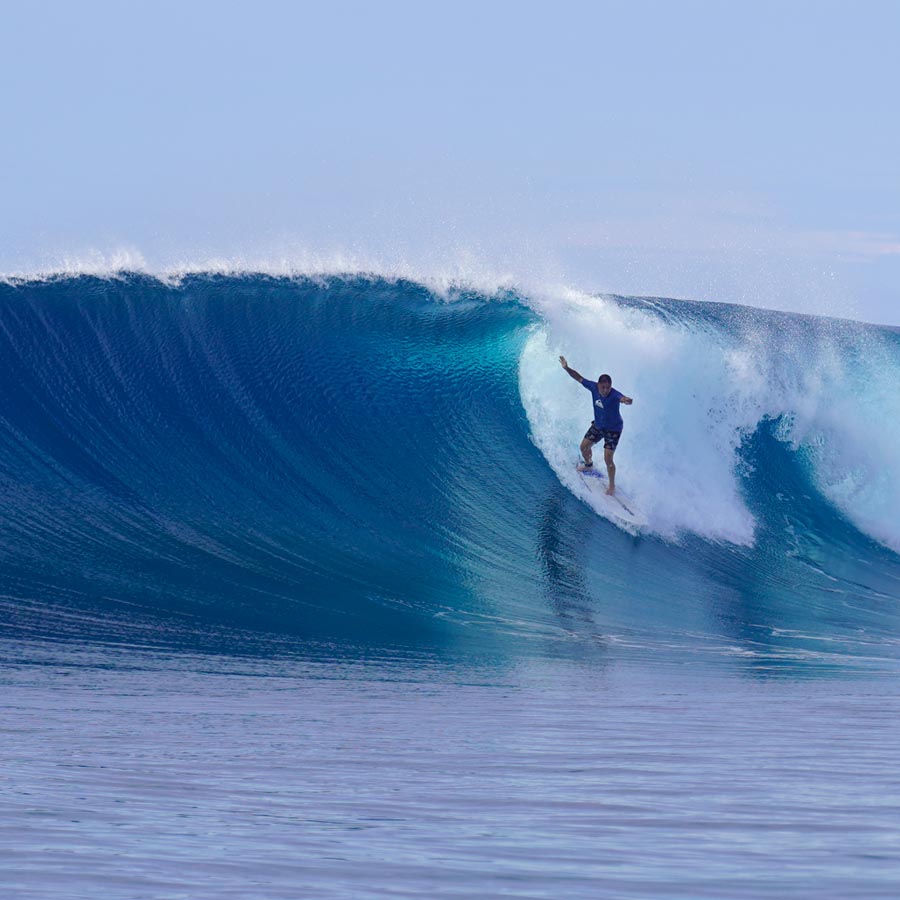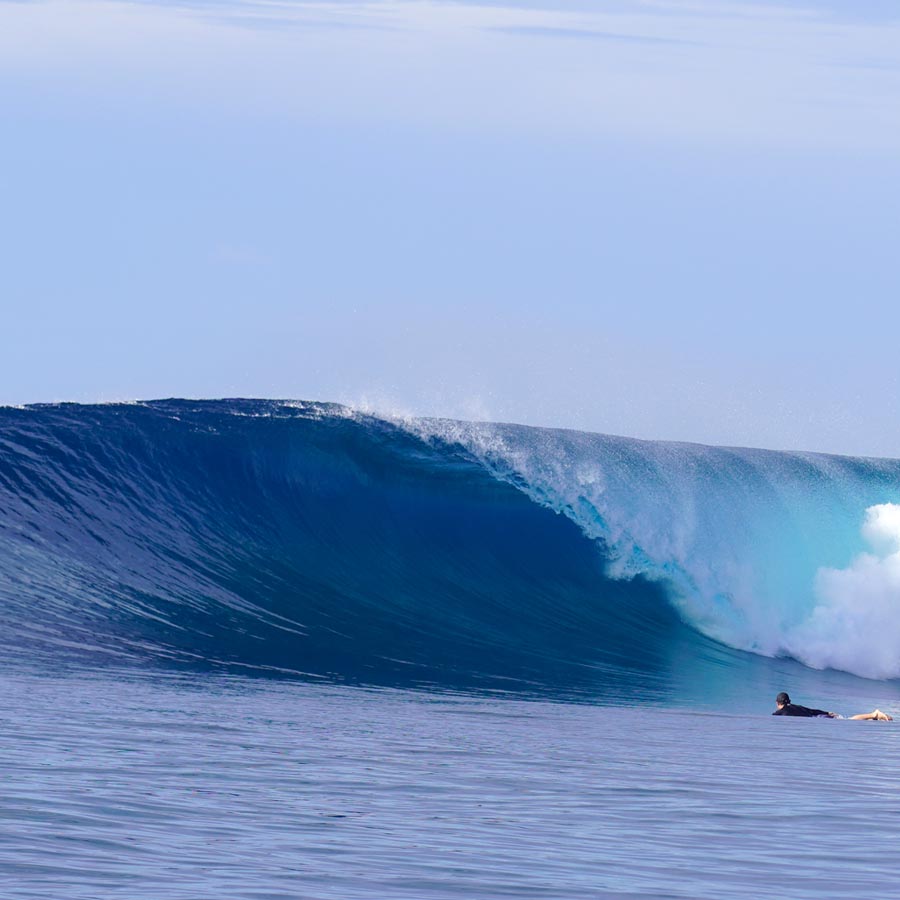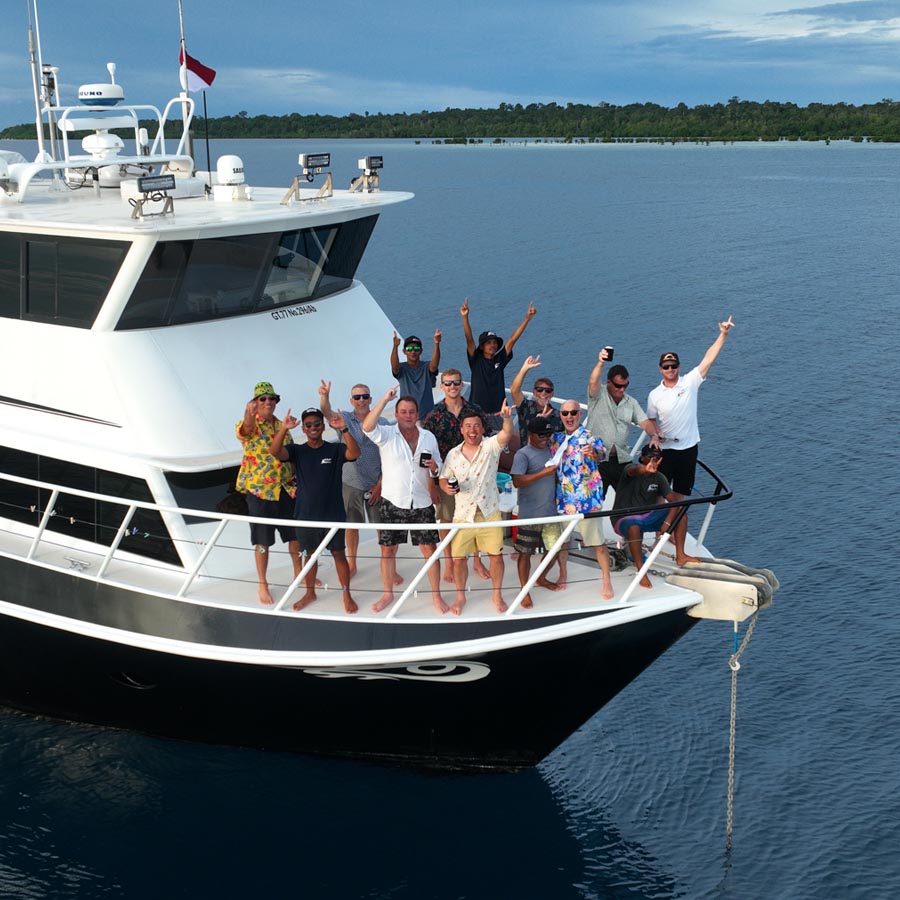Camera Gear
We use a professional range of gear to ensure quality imagery. Our main cameras are the Panasonic Lumix GH5 and GH6, paired with lenses including the 100-400mm, 25mm, and 9mm for versatile shooting. Aerial footage is captured with the DJI Mavic 3 Classic, while our behind-the-scenes action shots are captured with the GoPro Hero 12. For water-based filming, we rely on the rugged Liquid Eye water housing system to keep our equipment dry. See more of the gear we use in our online store below.
Mentawai Fast Ferry Price & Schedule
Here is the schedule for the Mentawai fast ferry that runs between Padang and the Mentawai Islands. The ferry operates every day of the week but travels to different locations.
Check departures
Please check the schedule on the website as these dates can change. Also please note the ferry is sometimes cancelled because of bad weather so check with the ferry operator the day before departure.
Monday, Wednesday, Friday, Sunday
Padang - Tua Pejat
06:00am Padang - Tuapejat
15:00pm Tuapejat - Padang
Tuesday, Thursday, Saturday
Padang and Sikalabuan / Siberut
07:00am Padang - Sikalabuan - Siberut
14:30pm Siberut - Padang
Friday
Padang and Sikikap
07:00am Padang - Sikikap
13:00pm Sikikap - Padang
Sunday
Padang, Sioban and Tuapejat.
10am Padang - Sioban - Tuapejat
15:00pm Tuapejat - Padang
Check departures
Please check the schedule on the website as these dates can change. Also please note the ferry is sometimes cancelled because of bad weather so check with the ferry operator the day before departure.
Mentawai Fast Ferry Price?
Regular Ticket for Foreign Tourists (WNA): Rp 350,000
VIP Ticket for Foreign Tourists (WNA): Rp 400,000
Regular Ticket for Indonesian Citizens (WNI): Rp 280,000
VIP Ticket for Indonesian Citizens (WNI): Rp 350,000
Surfboard Fees:
1–15 kg: Rp 230,000 per bag
16–25 kg: Rp 460,000 per bag
Over 25 kg: Rp 690,000 per bag
Mentawai Fast Ferry Location
The Mentawai fast ferry departs from Harbour at Muara located in Padang city
Other Information on the Mentawai Fast Ferry.
The ferry trip usually takes between 3-5 hrs depending on the weather and where you are travelling. Always check if the ferry is running with the operator day before departure. The ferry leaves Padang early morning so you need to arrive day before departure. You can buy snacks and drinks onboard the Ferry. If you get seasick take some Dramamine or motion sickness pills before the crossing.
Are there any other ways to get to the Mentawai Islands?
There are overnight ferry's that run between Padang and the Mentawai islands. Both the Ambu Ambu and the Gambolo operate trips a couple of times a week. These are both slow ferry's and the crossing can take up to 12 hrs or more. Good for budget travel but they can be crowded and sometimes overloaded.
Can I charter a private speed boat to the Mentawai Islands?
Most the surf resorts in the Mentawai islands offer a private speedboat transfer from Padang. The prices vary on which resorts you use but this can be a dangerous crossing and its only advisable to do this trip with the more professional operators. There are also numerous surf charters running between the Islands.
Can I fly to the Mentawai Islands?
Currently Suzi air fly there twice a week. They have recently extended the airport in Rokot which is close to Tuapejat on Sipora Island. They plan to open this airport to regular domestic flights soon.
Mentawai Checklist
Passport and all travel documents with photocopies, Include your Travel Insurance, Airline ticket and check your passport has over 6 months on the expiry date. Keep all your important documents safe in a small carry bag. 30 day Visa on arrival is available at the airport or you can also apply for the E-visa online.
Health Precautions check with your doctor regarding malaria medication and any other vaccinations needed. (Hepatitis A and Tetanus Vaccines). Malaria is low to moderate risk in Sumatra, most surfers don't take medication on a boat trip. Make sure you tell your charter operator about any serious health conditions. The mandatory Covid vaccine restrictions were revoked June 9th 2023. Bring all your usual first aid supplies
Hooded Rash Vest and surf hat for them long days in the water. With the hooded vests even if you don't like wearing the hood it gives you good sun protection on the back of your neck. A rash vest will also protect your skin from other irritants like sea lice. Might even be worth considering a 2mm vest for the early mornings and to help with protection from the reef.
Sun Cream that is water-resistant and provides broad-spectrum protection against both UVA and UVB rays. Look for a sunscreen with a minimum SPF of 30, but preferably 50 or higher for maximum protection. Zinc is a good option for sun protection on your face. Get some after sun lotion that contains natural ingredients like aloe vera, which to help soothe and hydrate the skin.
Lightweight Clothing Pack breathable, quick-drying clothing suitable for tropical climates. Long-sleeved shirts and pants can provide additional sun and insect protection.
Leash - No comp leashes. Get a decent leash and don't use an old one. Try get a quick release system just in case you get caught out on a coral head. Look for a leash 5mm or thicker and around 6 foot long. Always good to have a few spare packed in your bag.
Reef Boots - Boots will help protect your feet from the sharp coral reef. It's worth having a pair packed even if you don't use them for surfing. We like the split toe boots with the thicker sole. Perfect for scratching up the reef to collect your surfboard if your leash breaks.
Wax - Tropical surf wax, warm water wax. Normal wax is useless. Tropical wax is typically harder and more durable than standard surf wax, which can melt or become too soft in warmer water temperatures Clean your wax off your boards before the trip.
Fins - Bring a variety of fin sizes and a spare fin key. Always good to have a couple of sets of fins on standby. Pack some large fins for them bigger days. Double check your fin system before purchasing fins. (FCS or Future)
Sunglasses - Good, polarized sunglasses, sun hat and a long sleeve shirt for fishing trips. Get a strap for your sunglasses so you don't lose them over the side of the boat.
First Aid Kit - Bring a small first aid kit with you, Include items like adhesive bandages, sterile gauze pads, medical tape, tweezers, scissors, antiseptic cream and alcohol wipes.
Medication painkillers, ibuprofen and antibiotics are a must. Make sure you have a doctors note for any subscription drugs. Triple antibiotic ointment for your reef cuts and oral antibiotics (Amoxicillin or Ciprofloxacin) for skin infections etc..
Sea Sickness can be a real problem, Bring some Dramamine or motion sickness medication. Sea sickness can end a trip so make sure you bring something to help if you are affected.
Extra cash & Credit card for emergency. (IDR Indonesian Rupiah) Its always handy to have spare cash for transit, extra beer money tips for the crew etc... You can get cash from the ATM or one of the banks in Padang but might be easier to change your currency to Indonesian Rupiah before you arrive. A good tip for the crew is around 150 USD per guest and an extra carton of Bintang costs about 35 USD. You also need to check if your Mentawai tax has been paid. (2million IDR)
Hard drive - Bring a hard drive for photos from your trip. You can easily fill a 256 GB USB stick with photos and videos from your trip. Check your other electronics like phone and charger. Check what electrical sockets are on your charter boat. Might have to get a travel adapter.
Board Shorts - Most your days are spent in your board shorts. Make sure you choose a decent set that are comfy and fit well. Get a couple of spare sets for the trip, we recommend at least 3 pairs.
Rain Coat - Lightweight raincoat for the stormy wet days exploring the Jungle. Not essential but always handy to have a rain jacket in Indonesia. Good if you plan to spend any time on land.
Supplements - Eat well on your trip and stay hydrated. If you're going to spend a lot of time in the surf its worth bringing some extra supplements like Vitamins, Magnesium, Zinc and Electrolytes.
Snacks: While meals are provided, bringing your favorite snacks can be a good idea to have onboard. Protein and energy bars are popular with lots of our guests.
Ding Repair Kit - Solar resin and ding tape for any emergency board repairs. Most surf charters have a kit onboard but always handy to have the basics.
Contacts Leave the charter operators contact details with family at home. Check the boats sat phone number so friends and family can contact you from home in an emergency. Update your voicemail so work know your away on holiday.
Dry Bag - To keep all your valuables (Passport, paperwork, handphone & cash) Good to have a small bag for them days you're heading ashore to explore.
Ear Plugs Aqua ear and ear plugs or blue tack. Antibiotic ear drops. Ear infections are commonplace in the tropics so make sure you protect them. A few drops of hydrogen peroxide can help with blocked slightly infected ears.
Surfboards 2 standard thrusters and one step up, depending on surf forecast. We always recommend getting a little extra volume or length in your boards. Having that extra paddle power is really important. Make sure you pack your boards well to avoid damage in transit or another option is to get custom surfboards made in Bali and get them shipped to Mentawai before your trip
Accessories Here are some other accessories you might want to consider bringing. Water bottle, head lamp, books, super glue, go pro camera, headphones, journal, small binoculars, fishing lures and a towel. A bottle of alcohol from the duty free and a sleeve of cigarettes for the crew will always come in handy.
Travel Insurance - World Nomads
World Nomads Travel Insurance
We recently partnered with World Nomads travel Insurance. When you're heading out on a boat trip make sure you're traveling with a good insurance policy that covers you for surfing and medical evacuation services in Indonesia
Water Housing Checklist
Camera Settings - Before preparing your housing do your camera checks first. Make sure the battery is fully charged, check your memory card is in and formatted ready to go. Check your camera settings are correct before putting it inside the housing. Check your focus settings and make sure your lens and camera are clean and dry. Once you have performed all the necessary checks, insert the camera into the housing carefully, making sure it is seated properly. Make sure the base plate is secured tightly
Fogging - Always prepare your water housing before you leave for the beach, so as to minimize any chance of moisture getting in and causing condensation to form on the inside of the port. In a tropical environment prepare the housing in an air-conditioned room or use the sun to dry out the housing before closing it up. You can use silicone poches to help absorb moisture or for more information on fogging problems check out this Video from Liquid Eye Water Housings
Oring - Inspect the O-ring for any signs of damage, such as cracks, tears, or deformation. Make sure it is clean and free of debris, and lubricate it if necessary with silicone grease.
Sponge - We use sponge inside our housing. The idea behind this is the sponge will absorb any water before damaging your camera if you do have a small leak. This tip was given to us by Federico Vanno at liquid barrel
Secure - If you have nuts to tighten on the housing tighten opposite corners first. Tighten the nuts evenly by hand working corner to corner and checking the seal as you tighten. Don’t overtighten the nuts and make sure you have a good seal between the Oring and the backplate. If you have clips on your housing make sure they are locked in place.
Seal - Double check all your seals before taking it in the sea. Check the seal on your back plate and the seal on your port. Do a quick dunk test in the shallows, study the seals and the inside of the housing for any leaks before swimming into the line-up
Lens Port - Water droplets - Keep your port clean: A dirty port is more likely to attract water droplets, so make sure to keep it clean. Wipe it down with a microfiber cloth before and after each session. If your using a dome port try using saliva to help keep water drops off. If your using a flat port then wax works well.
Check - Before swimming out test some shots on the beach. Double check all your settings are correct. Check all your buttons are engaging on the backplate. Double check your trigger and zoom controls.
Monitor - While shooting keep checking your housing and the seal. Make sure there are no leaks and if you do have any problem or notice anything unusual then get out and check
Clean - After every session make sure you give your housing a good clean. We rinse our housing with fresh water at the beach then clean it again when we get home. Every month we give the housing a deep clean. Keeping all your equipment clean and well maintained is so important.
Take your time - When setting up your water housing and camera take your time. Most of our mistakes in the past were made when we were rushing. Keep all your gear clean and double check all your settings before swimming out. Have we missed some tricks and tips? Leave your suggestions below.
Surf Photography by Putu Juliartha
If you have ever wondered about surfing in Lombok, Indonesia then take a look at some of the stunning photography work from Putu Juliartha.. We have admired his artistic approach to surf and lifestyle photography for many years. We recently caught up with Putu and wanted to share his story with you.
Hey Putu please tell us a bit more about yourself, Where are you from? Why did you choose to be a surf photographer working in Lombok?
I was born in Lombok and I live with my family in a small Village called Tanah Embet Village in west Lombok. I work as a local guide around Lombok but my passion is photography, I started shooting surf photography back in 2013. A friend called Ebong gave me my first camera and I worked in kalimantan for a few years. I moved back to Lombok a few years back after my father passed away and I wanted to be close to my Family. We now live together with my mother my grandmother, my wife and my two daughters.
The first Camera I bought when I moved back to Lombok was a Canon 60D, I was lucky enough to get given a Sigma 150-600 lens and i've been shooting surf photography since then. The photography work along with my guiding tours helps me support my Family so I am very happy I can combine my passion with work.
I was inspired to take photographs from a young age, I always loved drawing and painting and when I was given a Camera to create my own images I really fell in love with capturing them special moments around me. These days I am shooting with a Canon 1D and 7D for my water photographs
Where are your favorite places in Lombok?
Lombok has alot of beauty and a very interesting culture, from the hills of mount Rinjani to the perfect waves at Desert point there is endless natural wonders throughout the island. The people are special and we have a mix of religions. The Watu telo people are a unique culture that adhere to both Hindu and Muslim religion praying 3 times a day and living in harmony at the foot hills of Rinjani.
Where are the best places to surf in Lombok?
You can surf all across Lombok from the west coast of Singgi down to Desert point and right across the south coast past Kuta and all the way to Ekas point. There are also waves on the east coast of Lombok, its a big island with a lot of places to explore. If you need a guide through the island please let me know.
We love Putu's work and hope you enjoyed his short story. Go follow his Instagram and if you are travelling through Indonesia then we highly recommend using local guides like Putu. Please contact Putu at [email protected]

